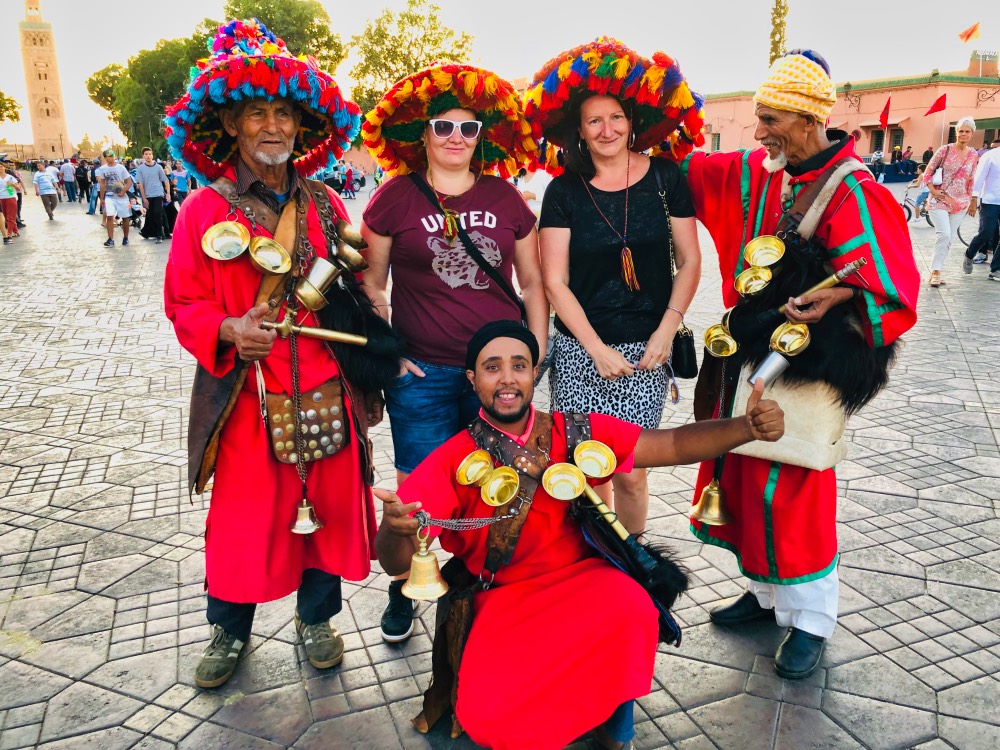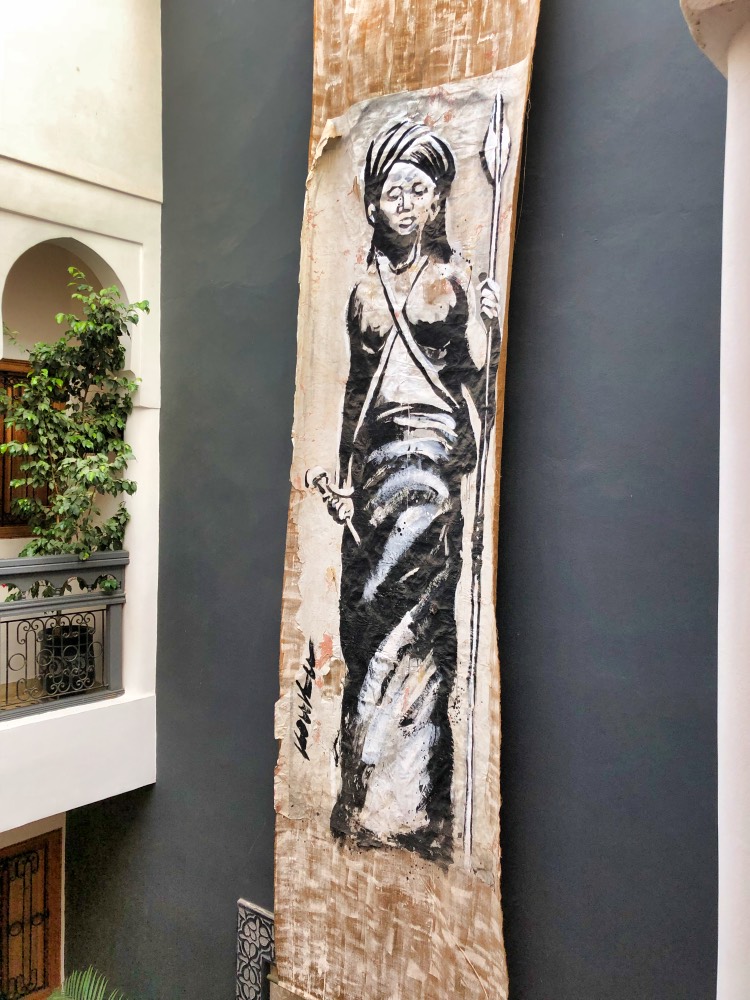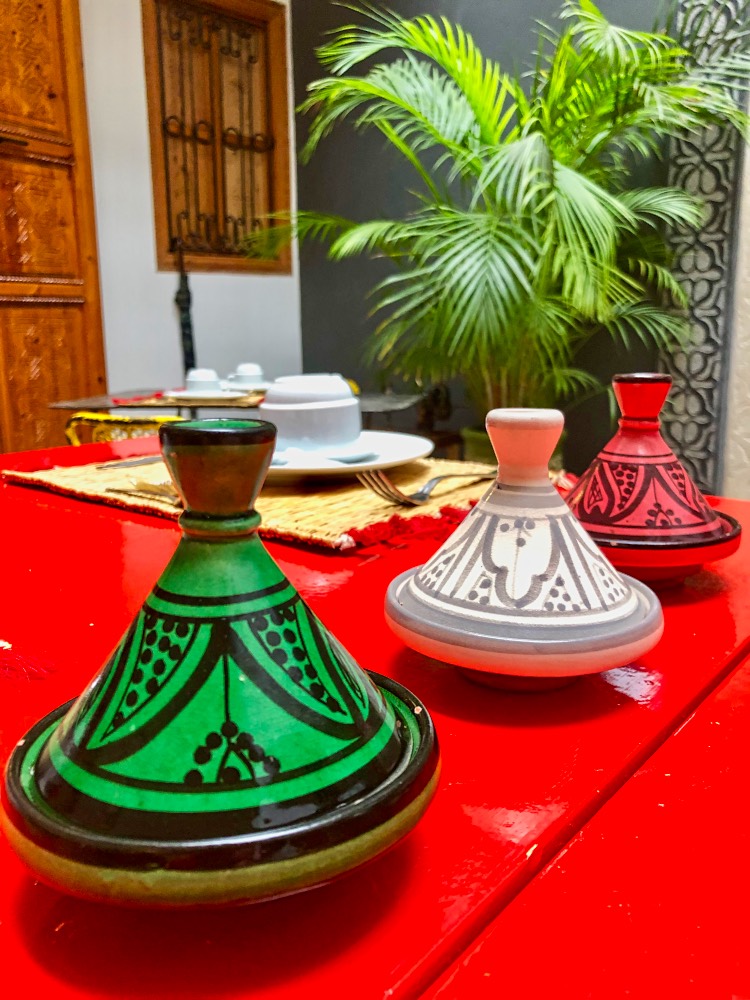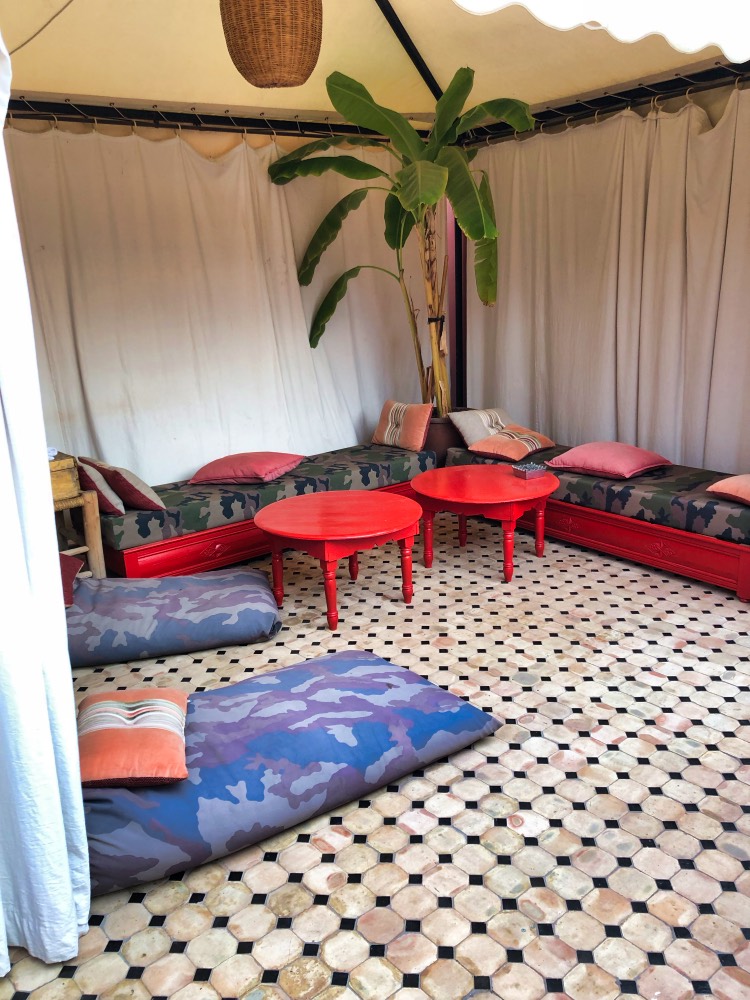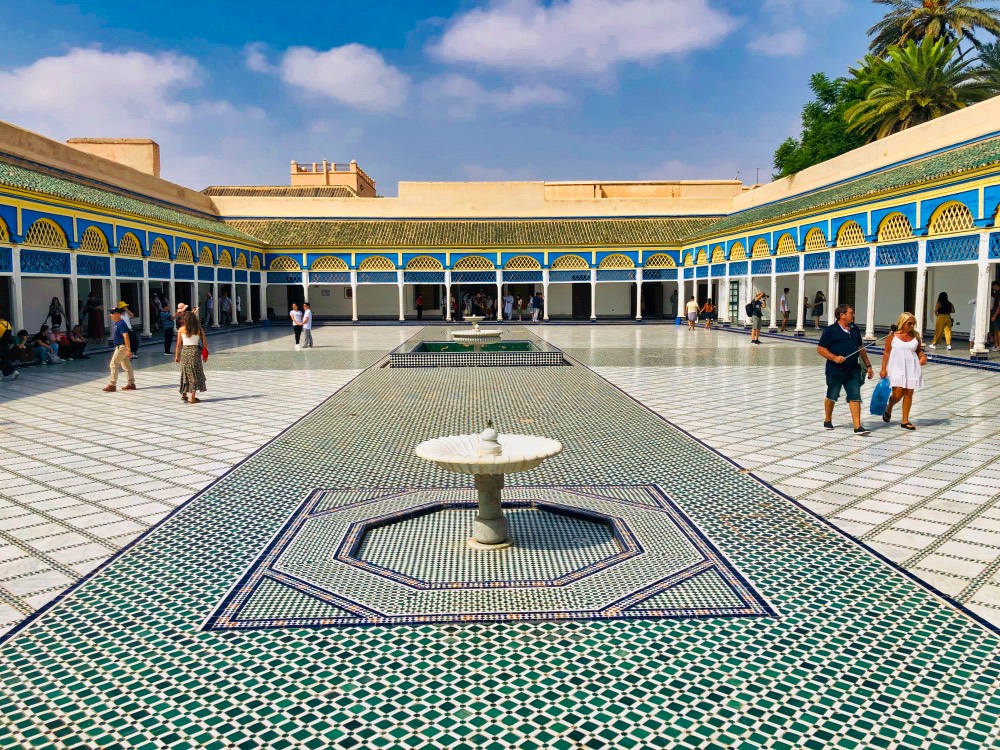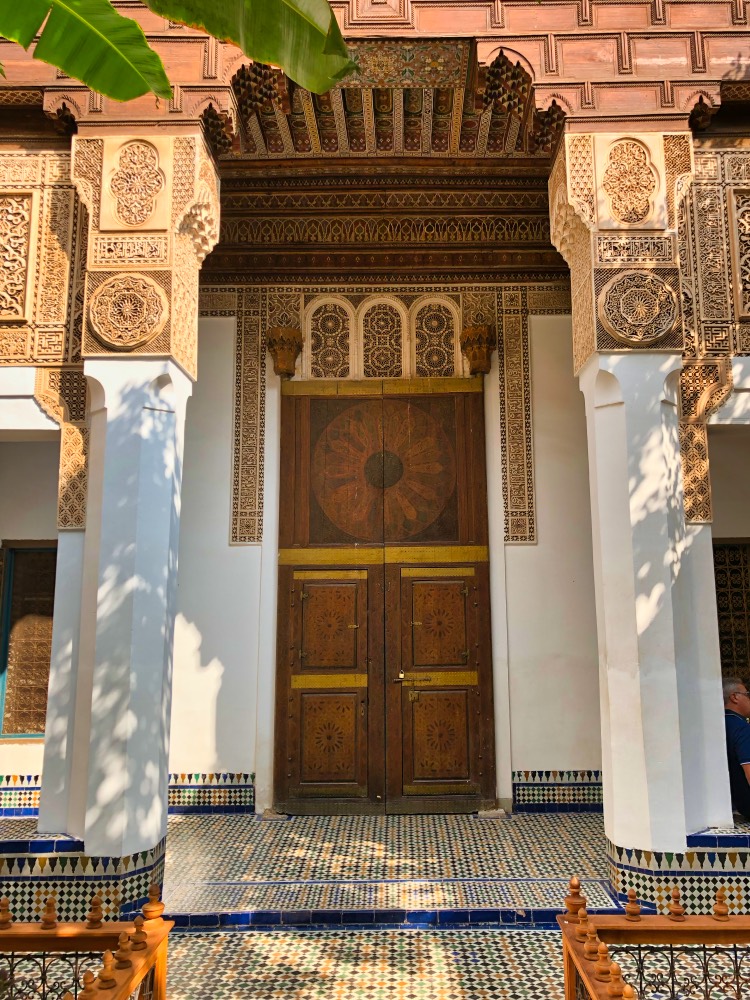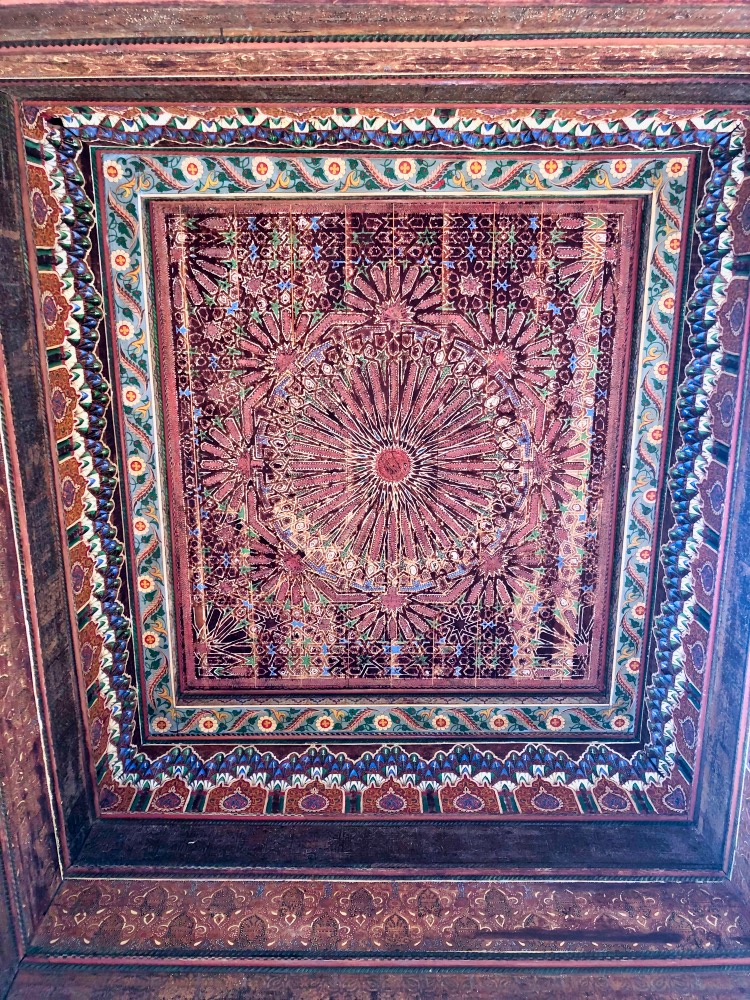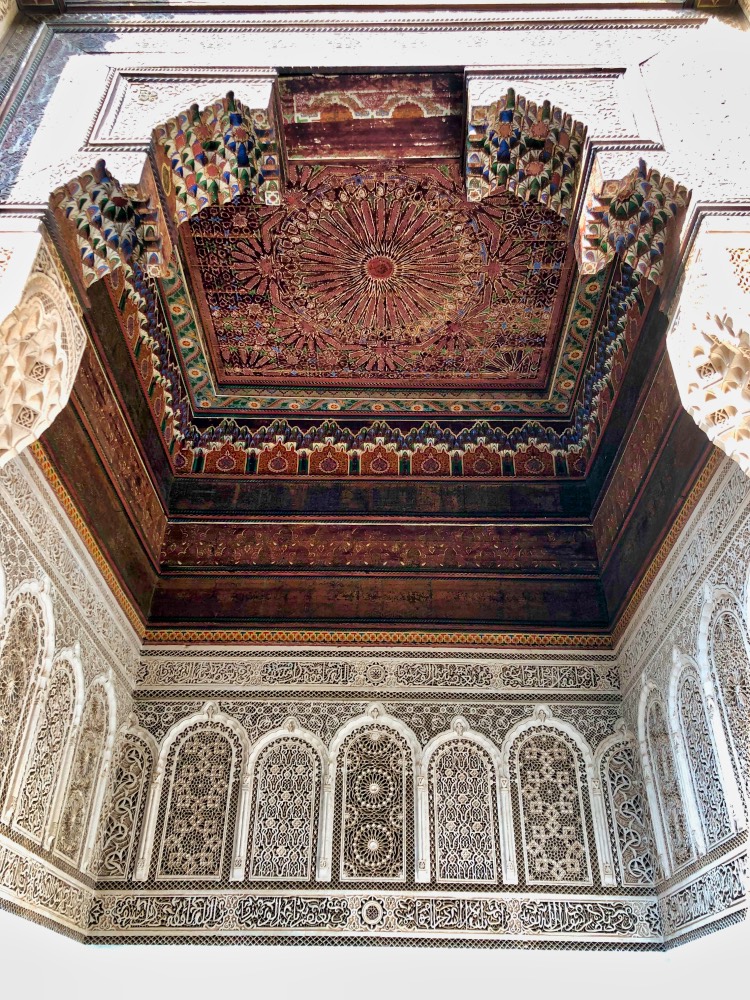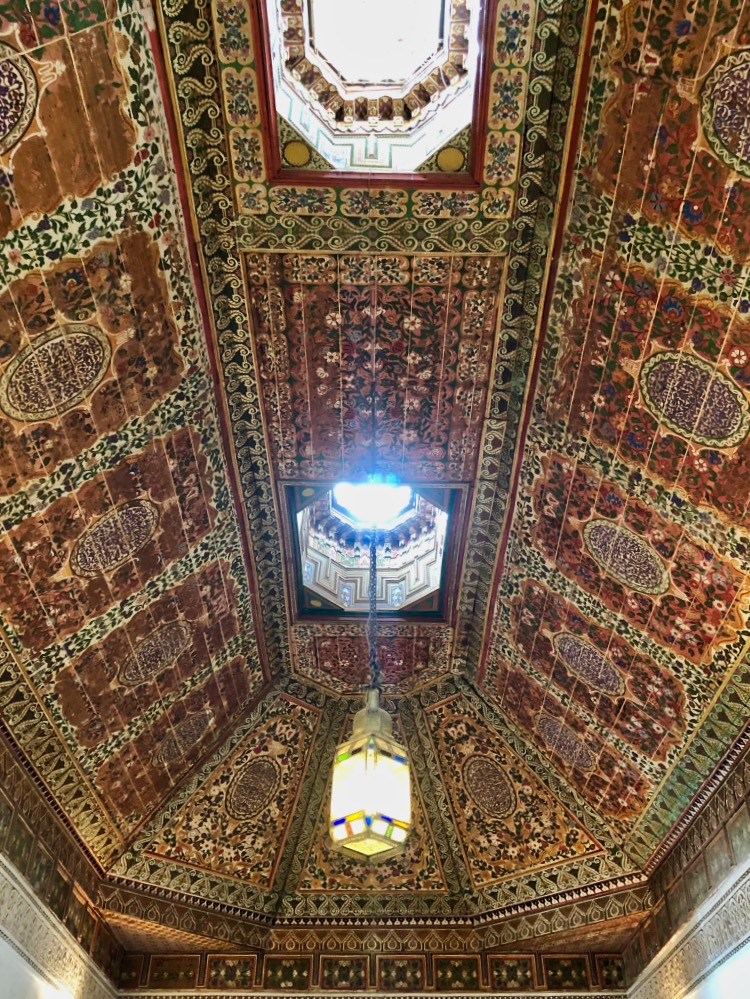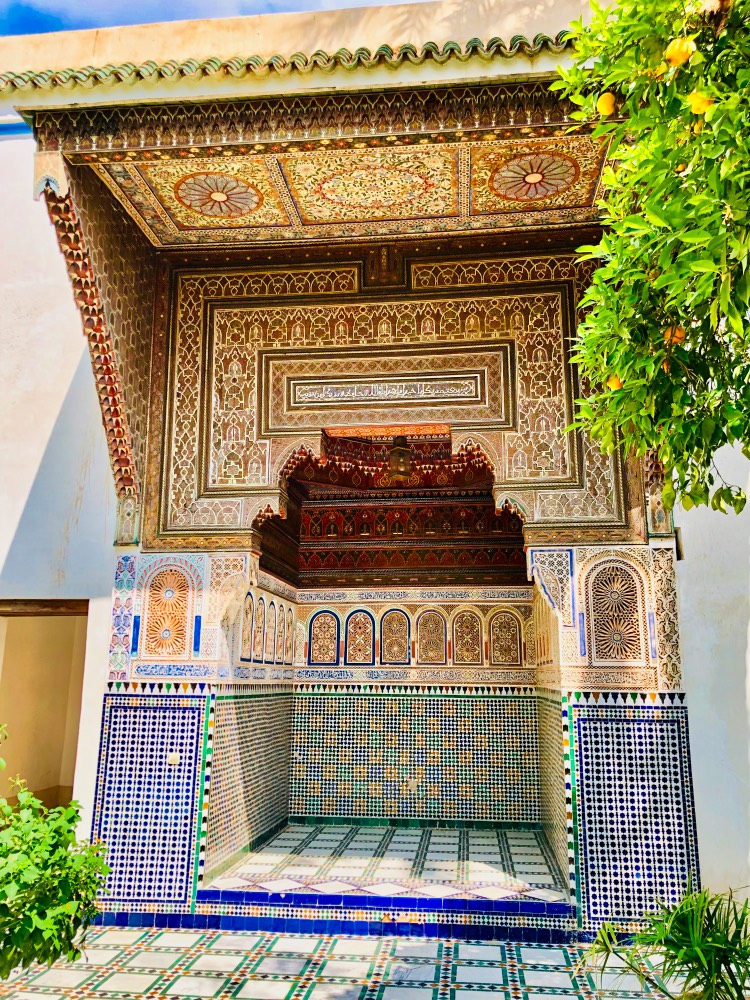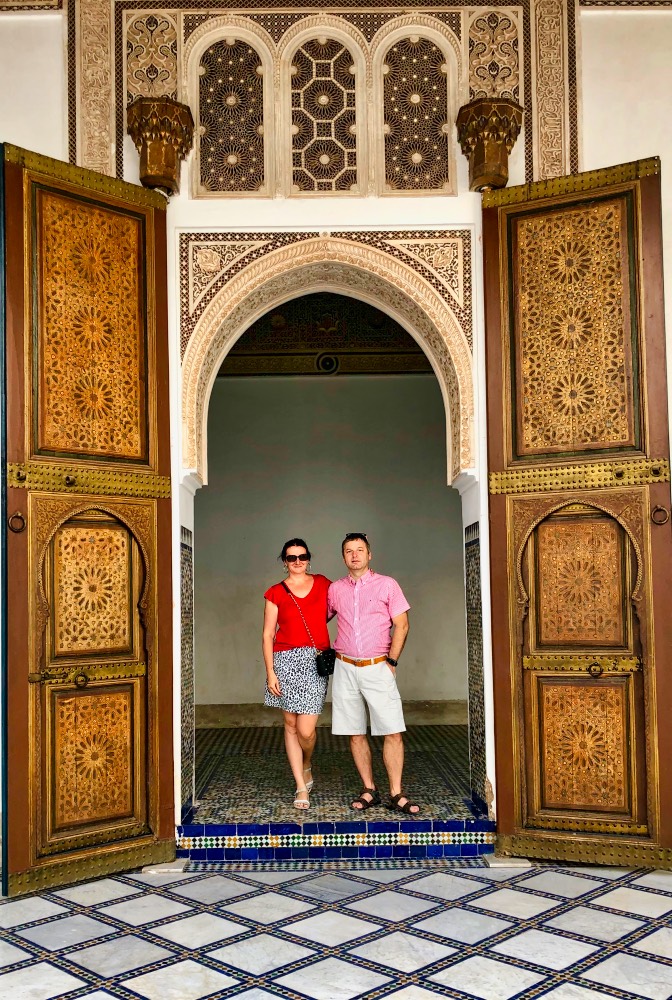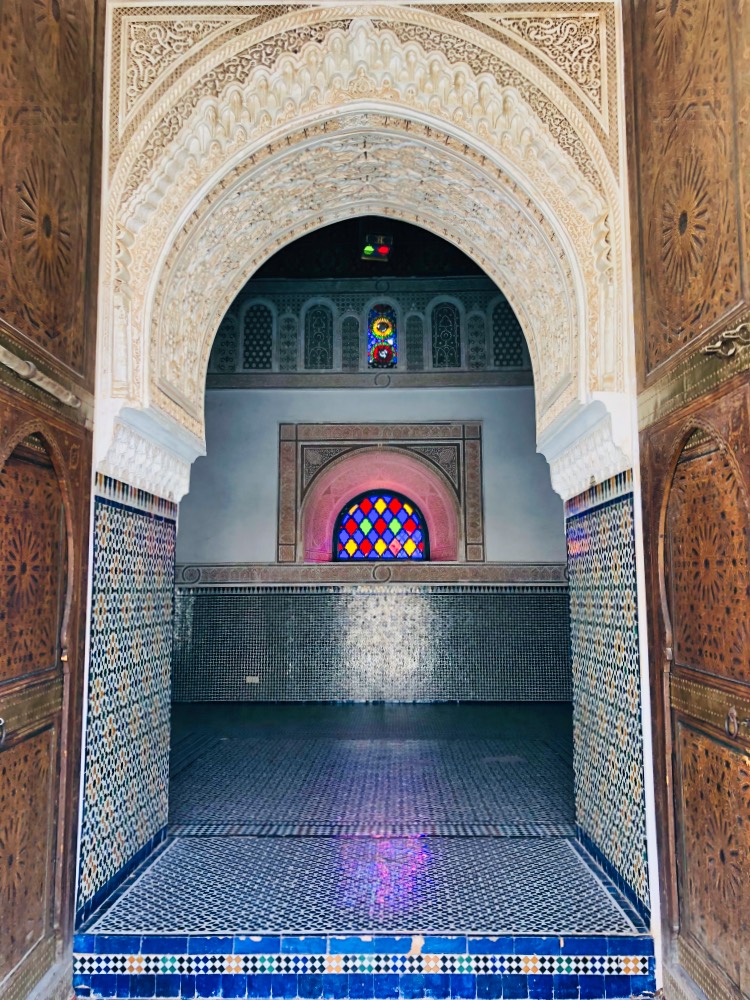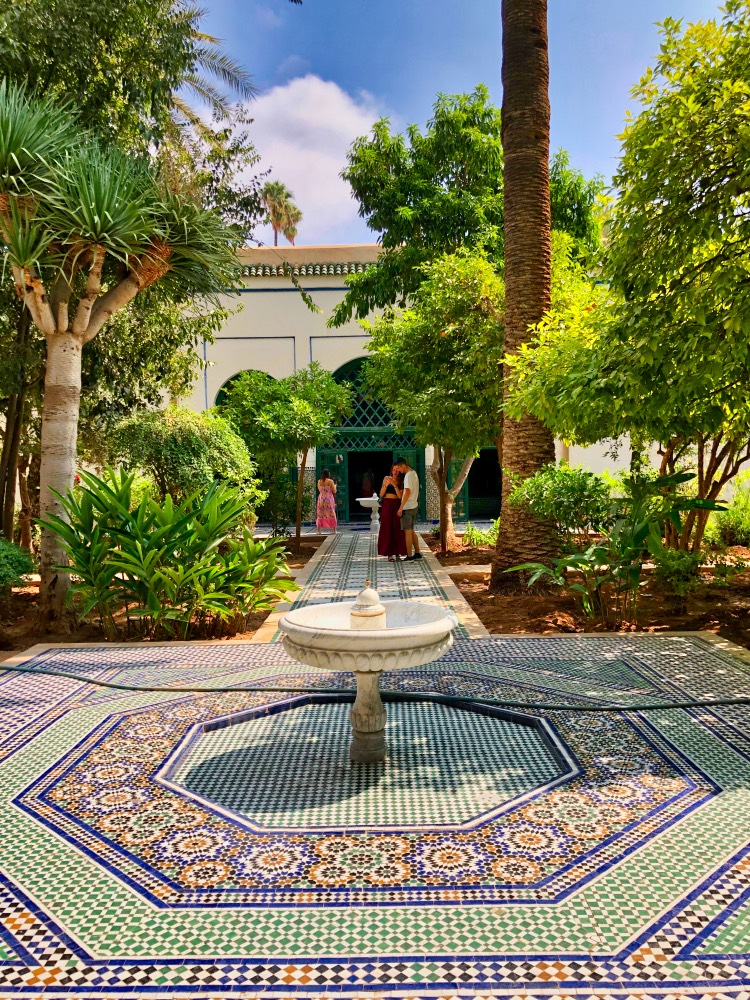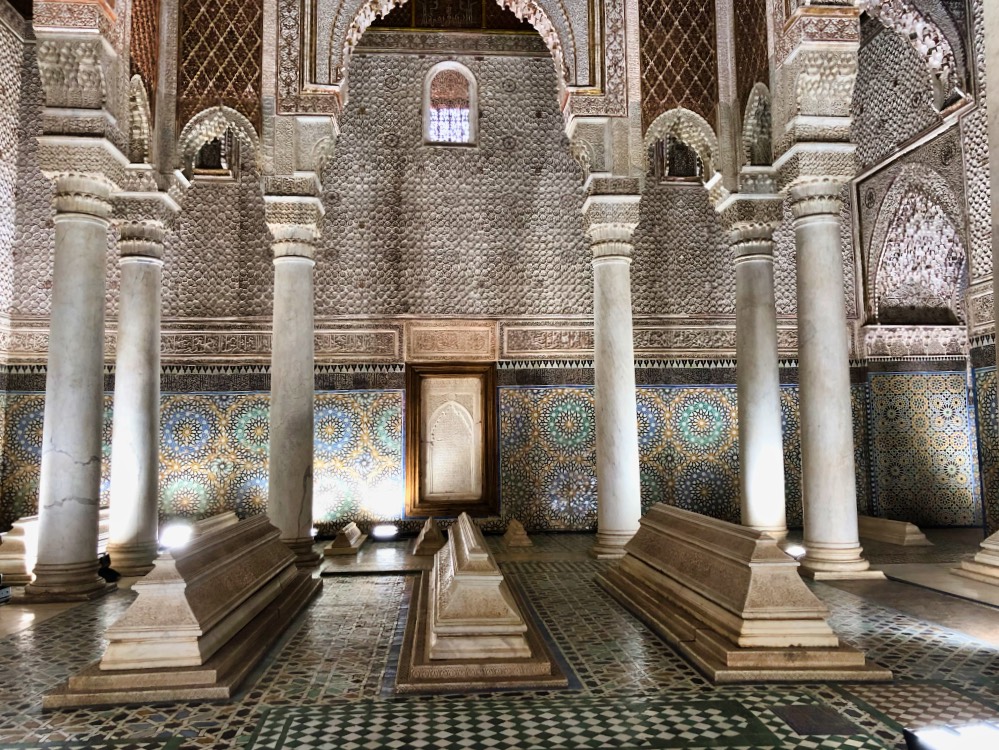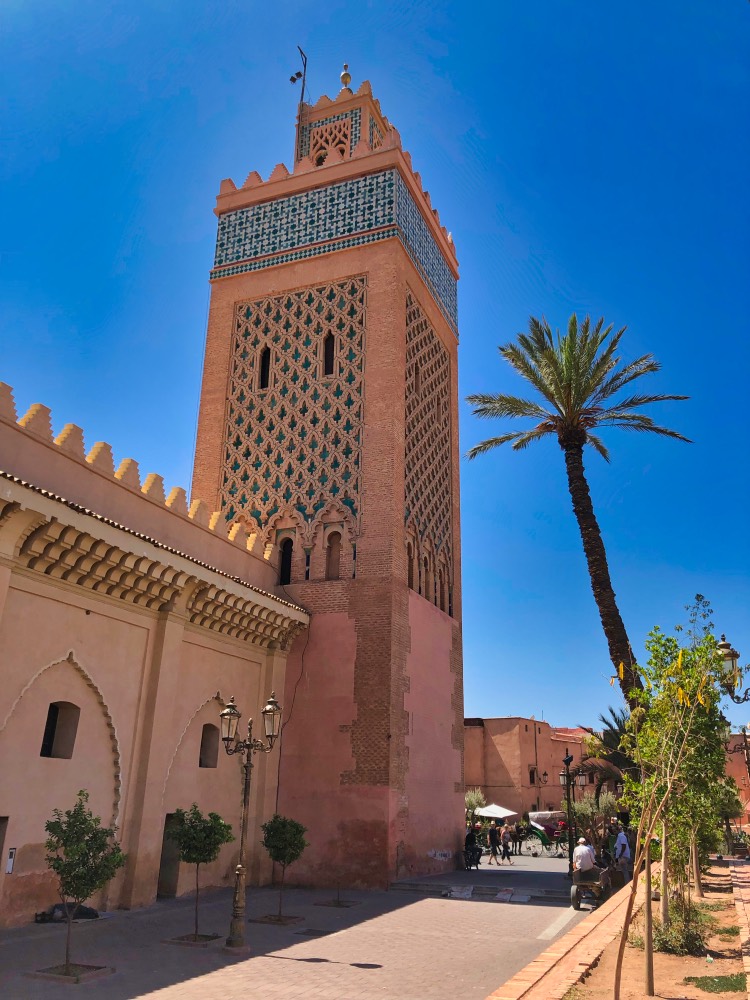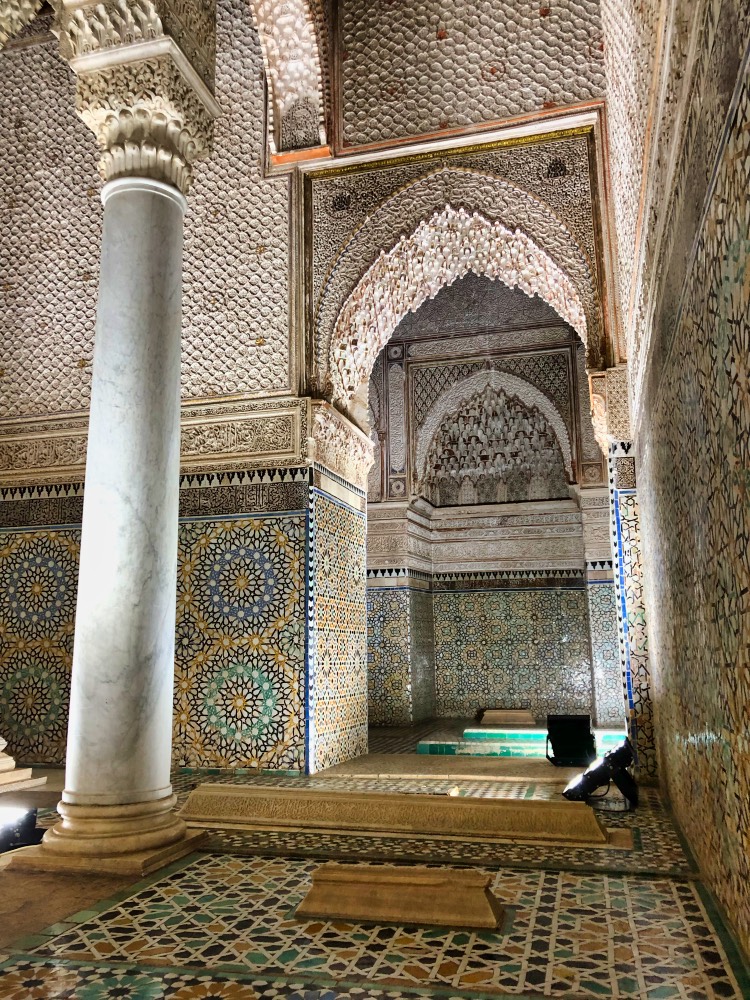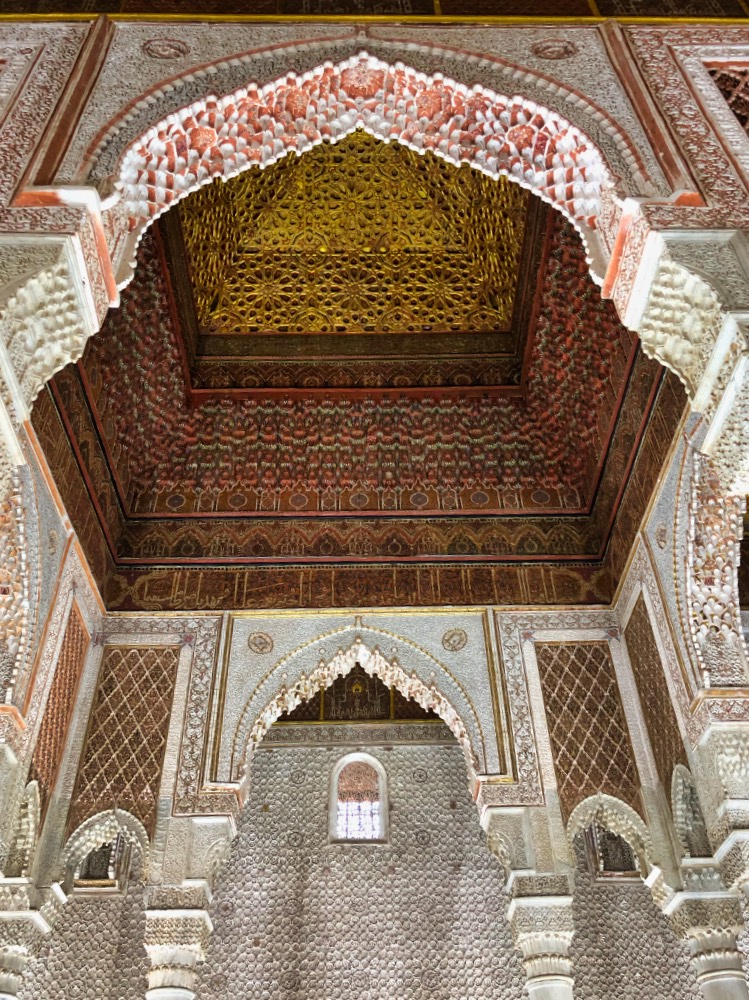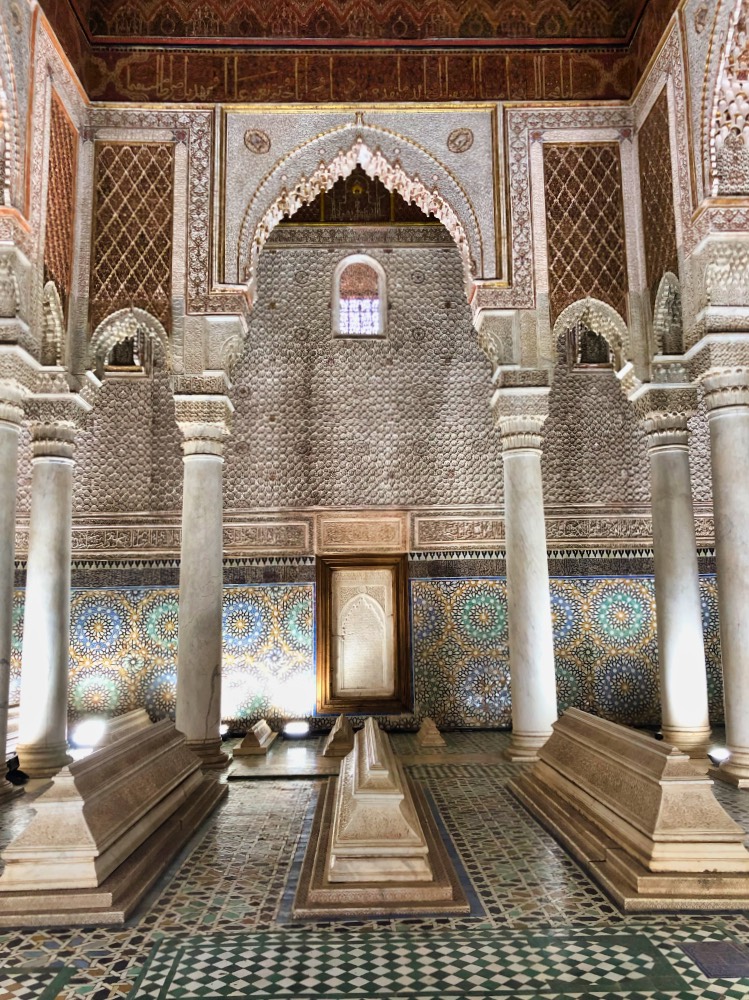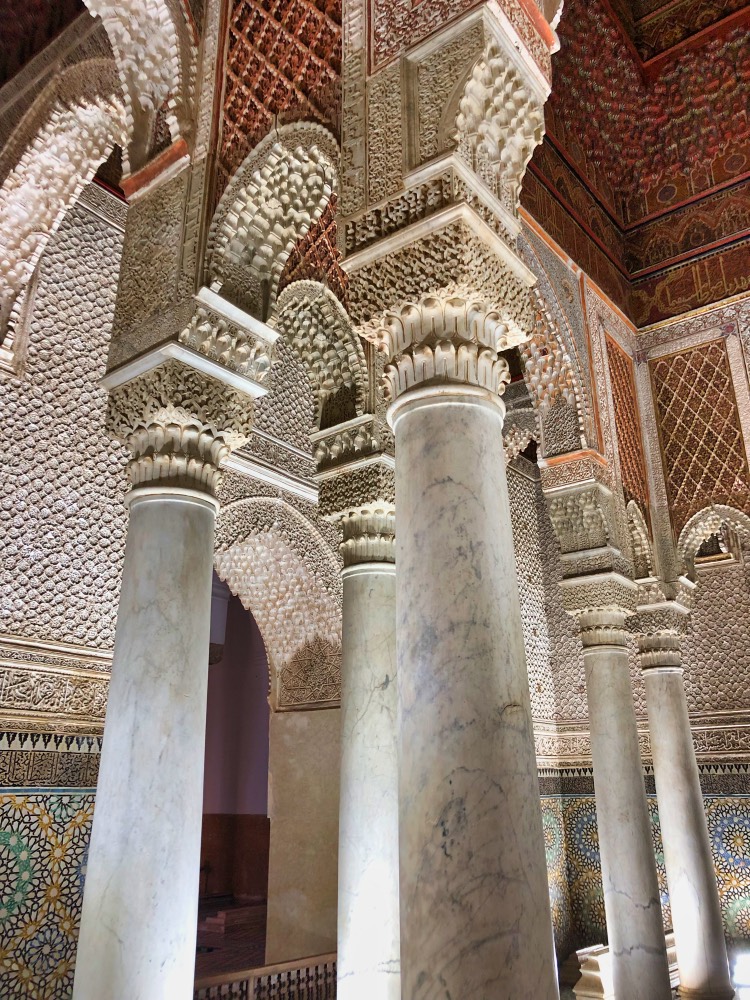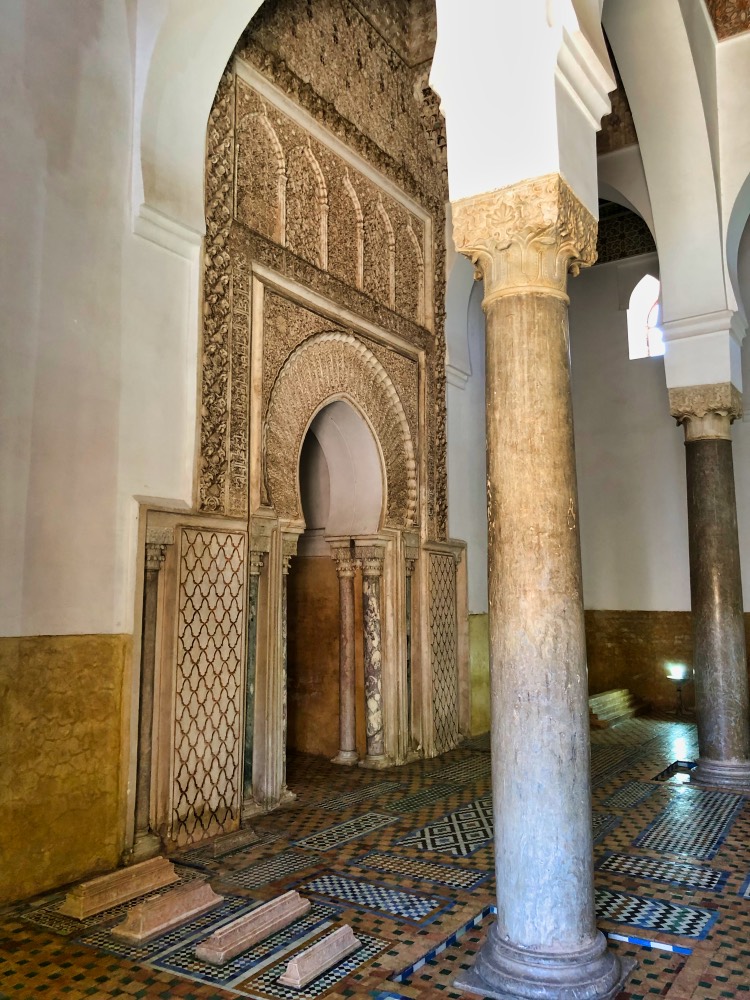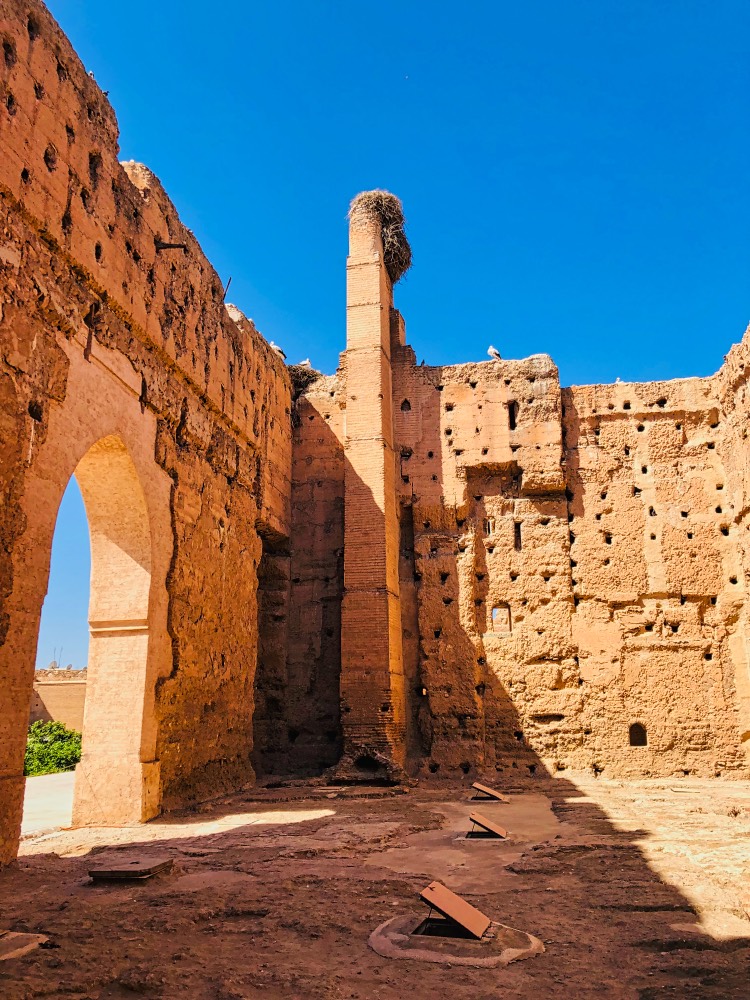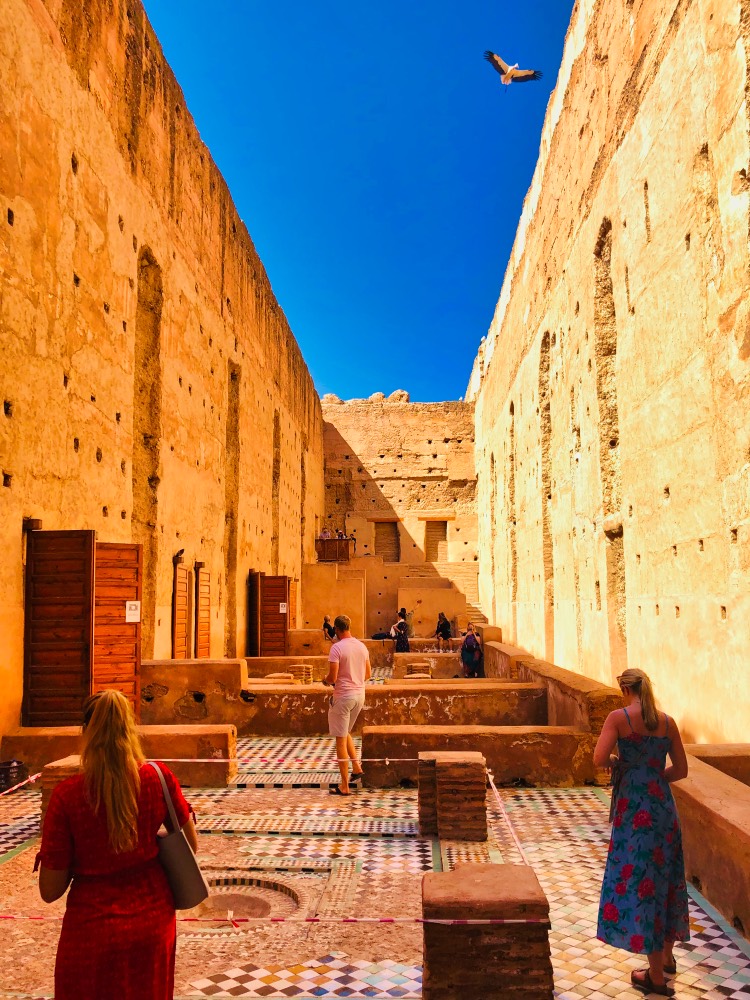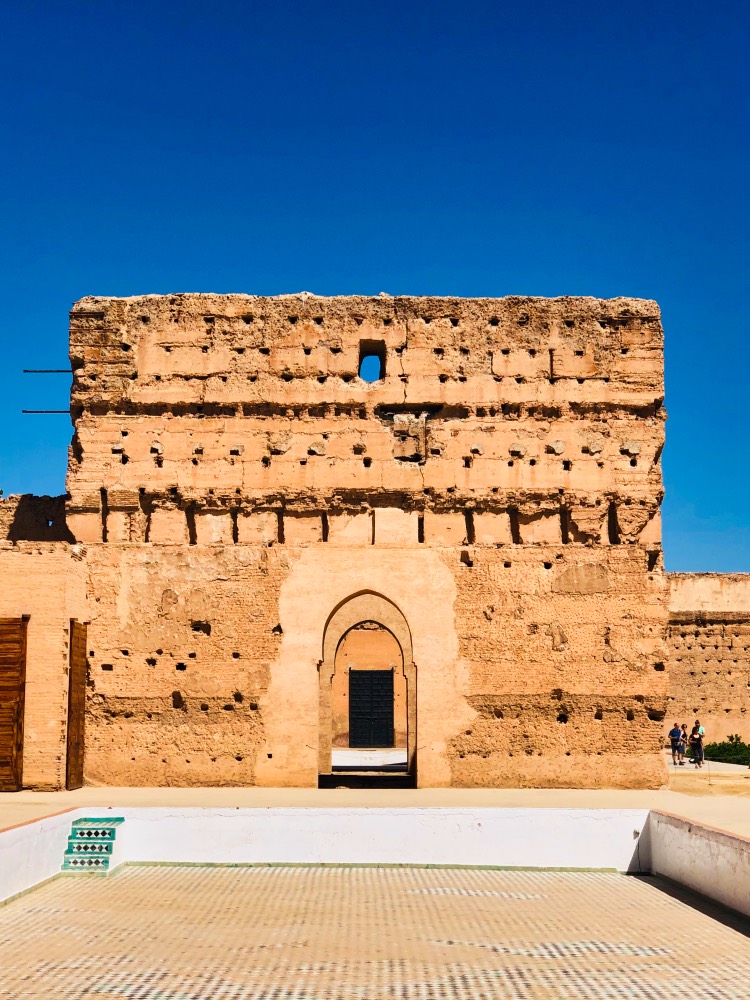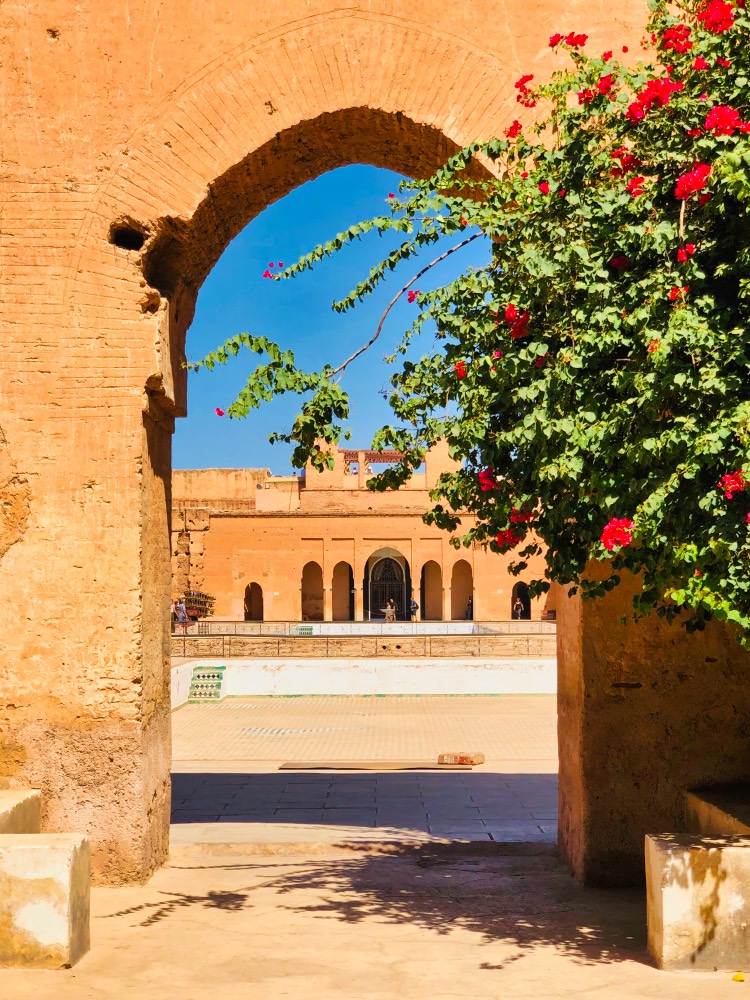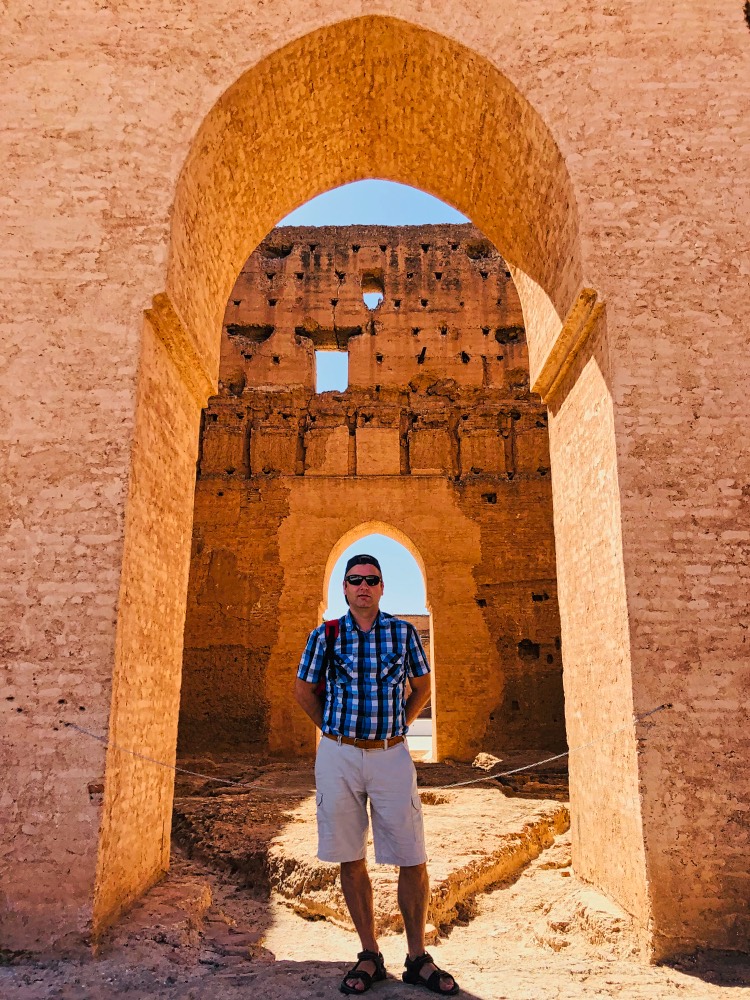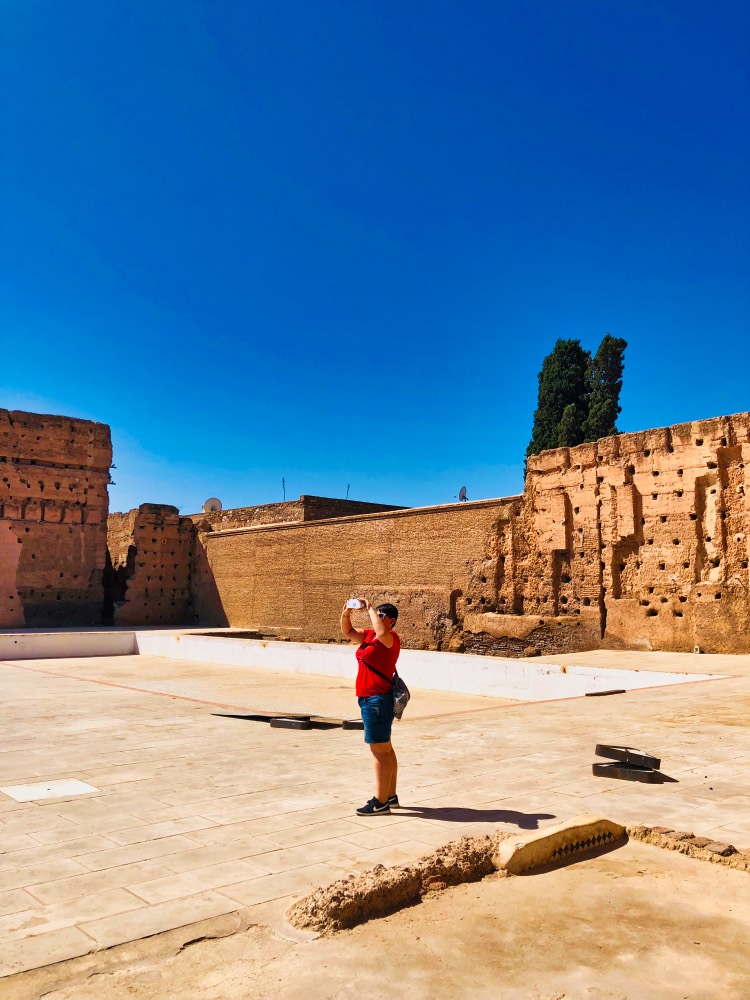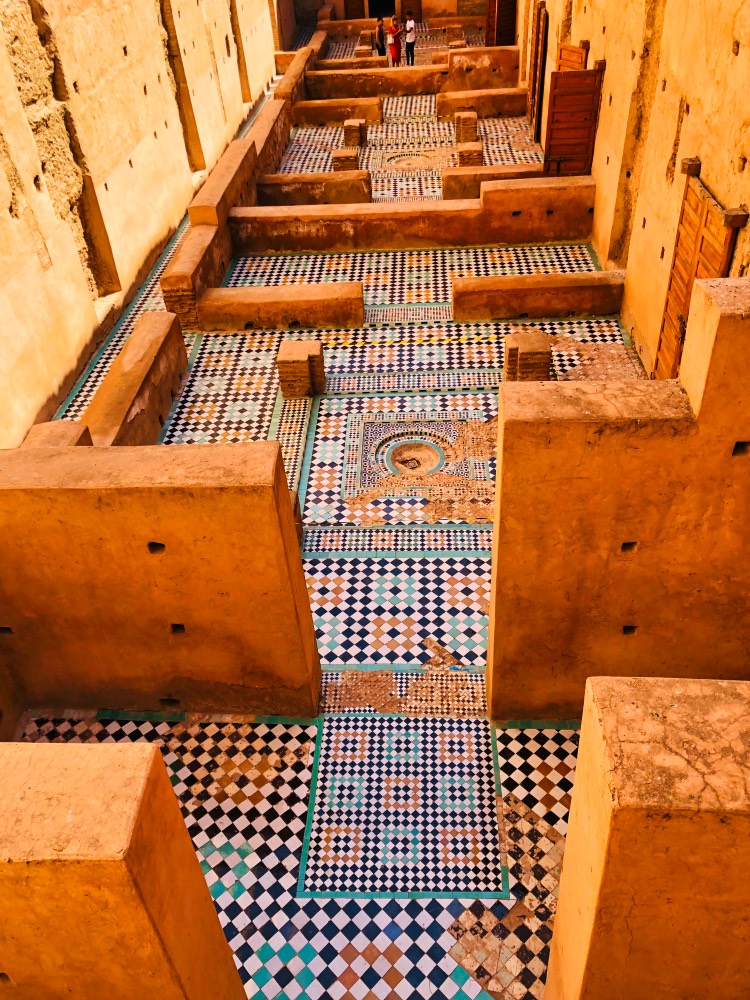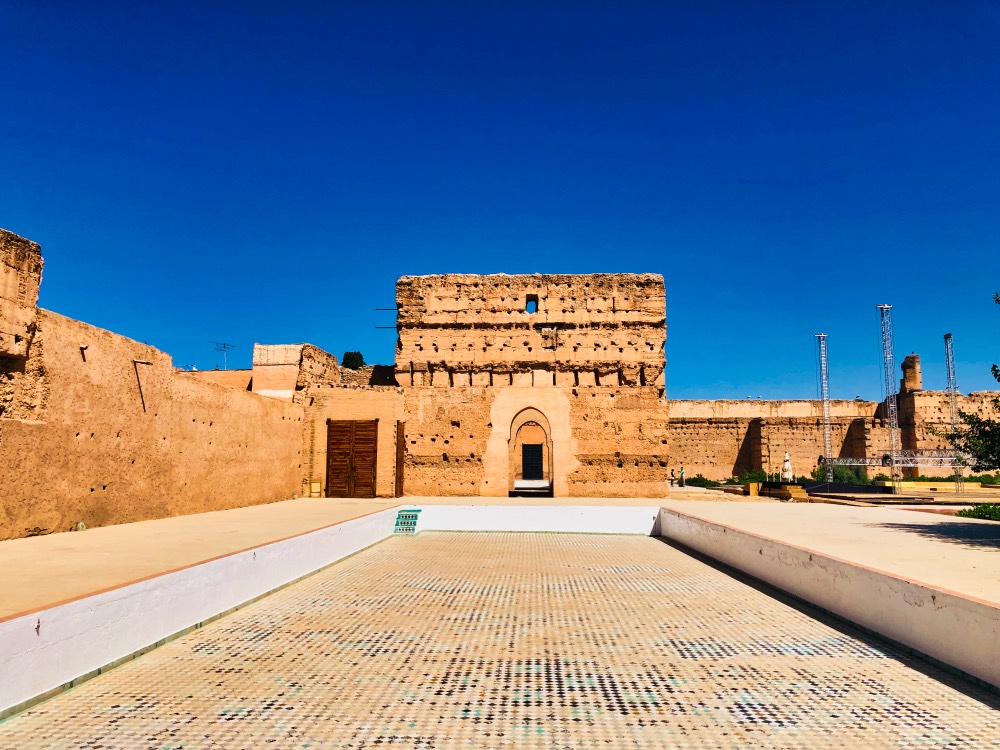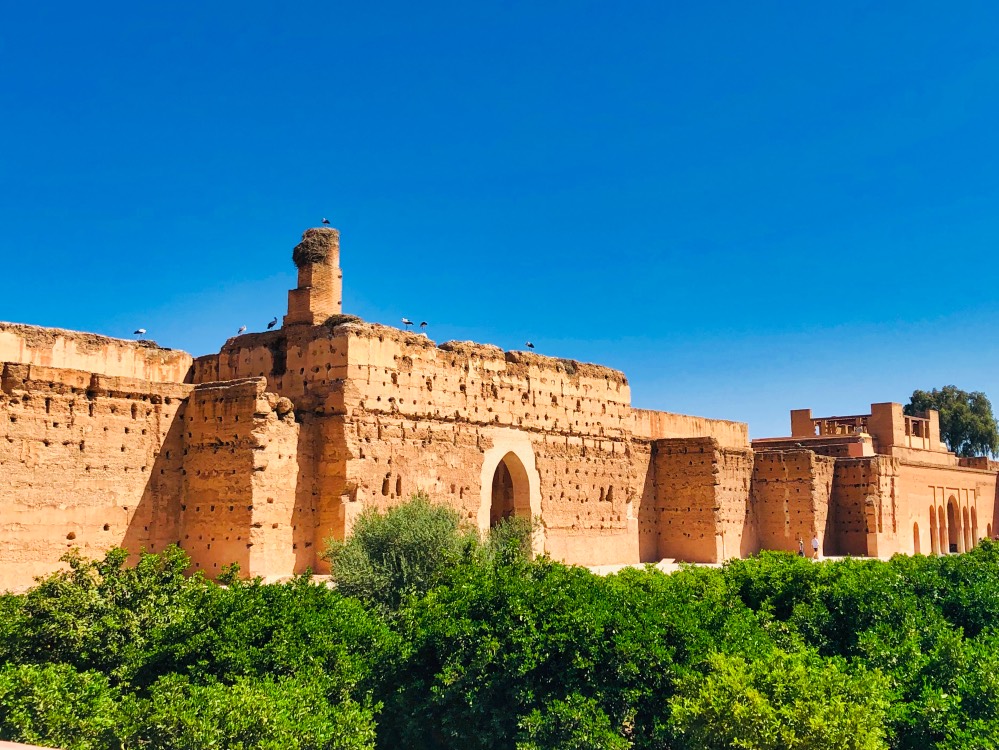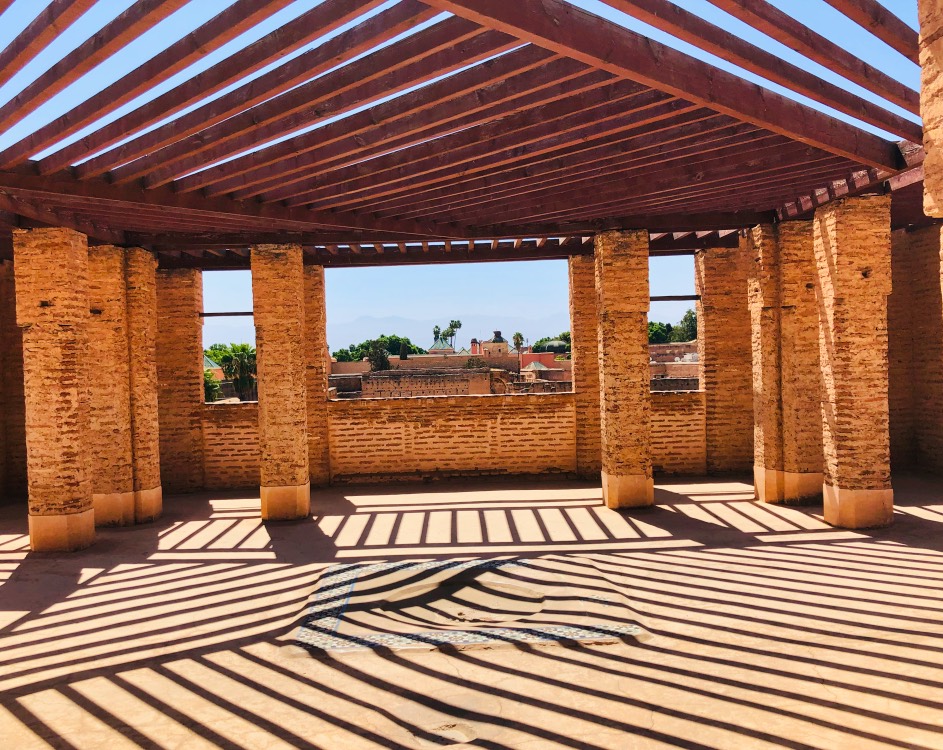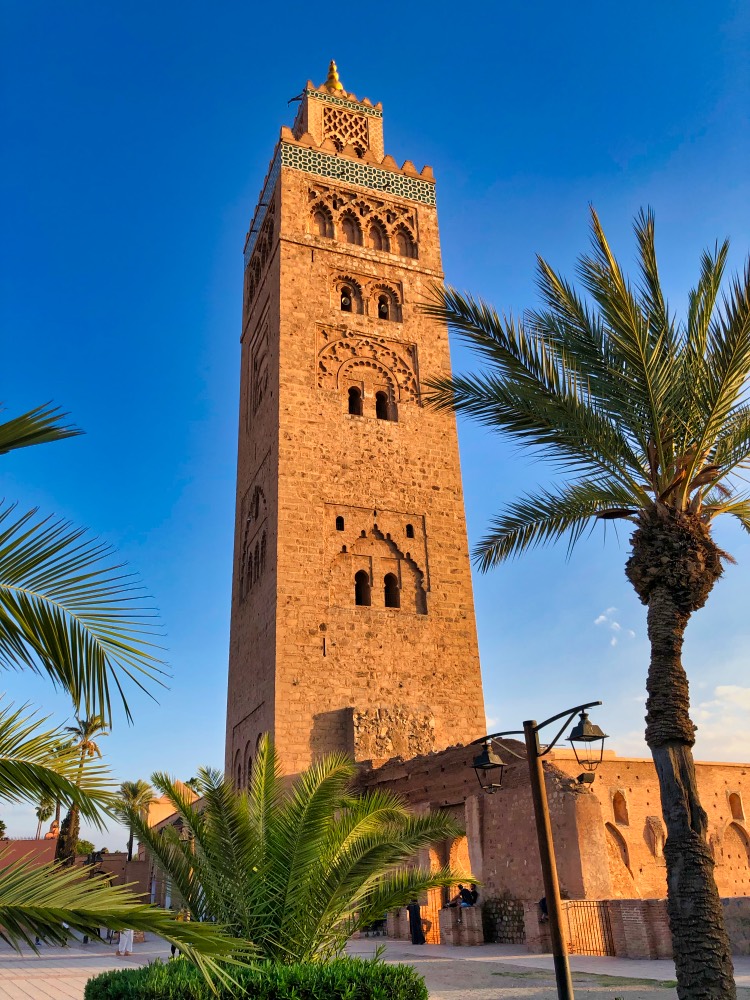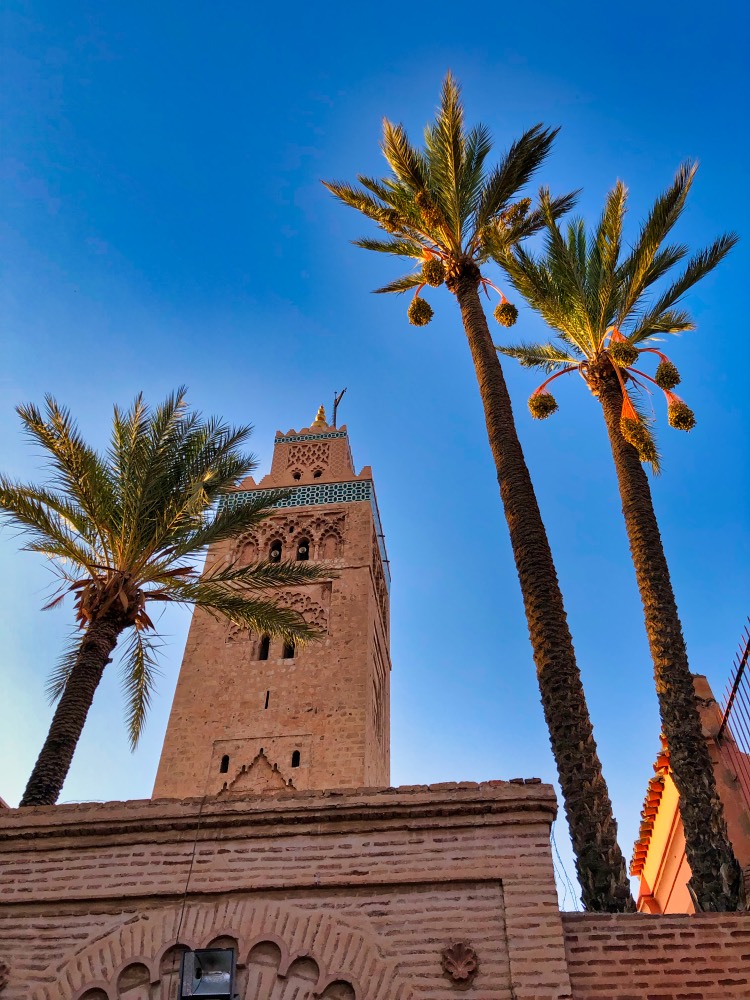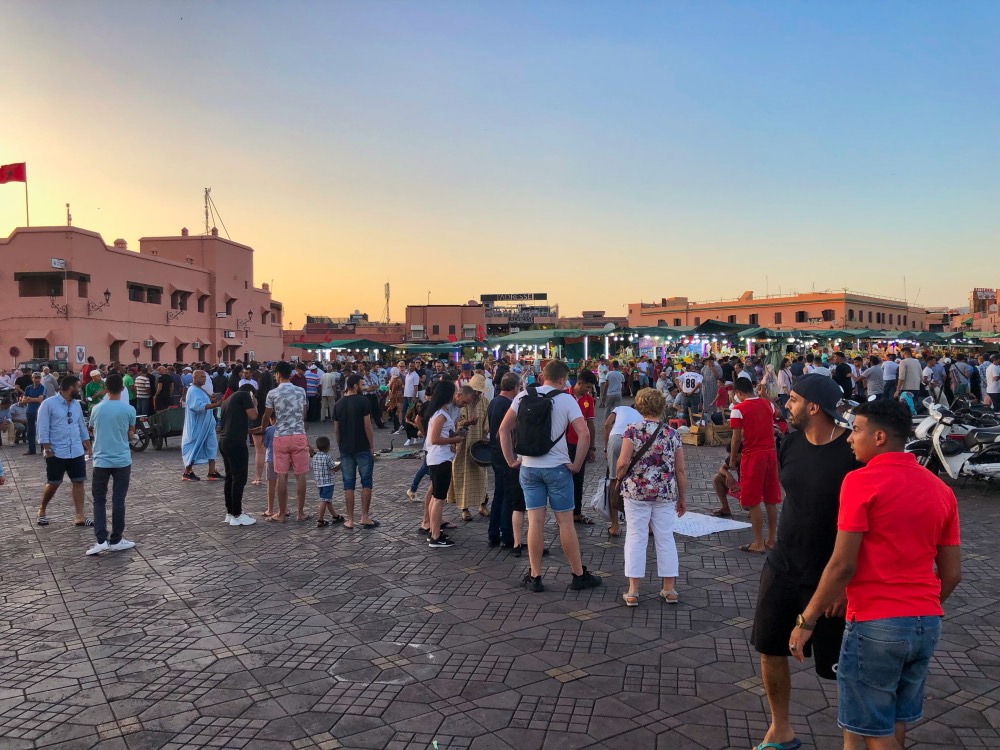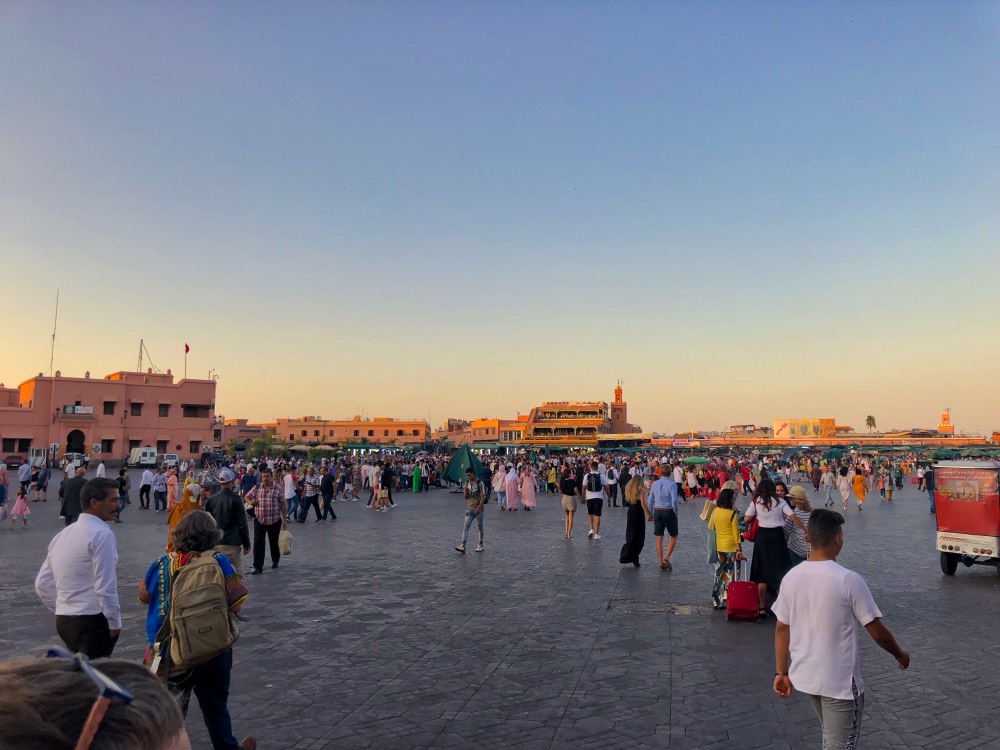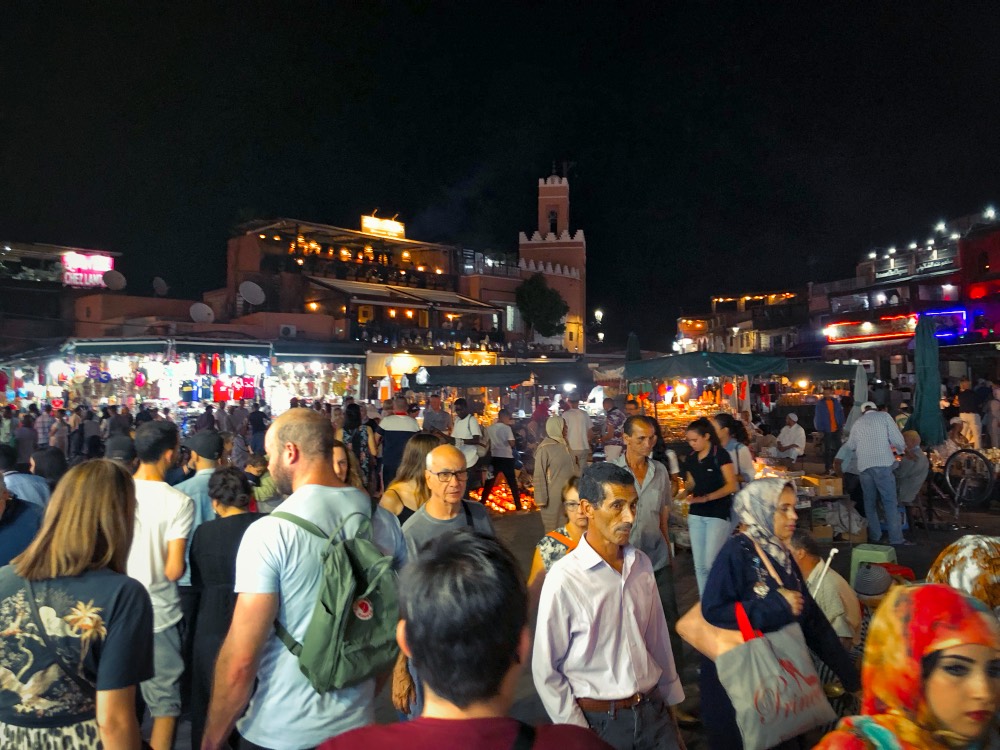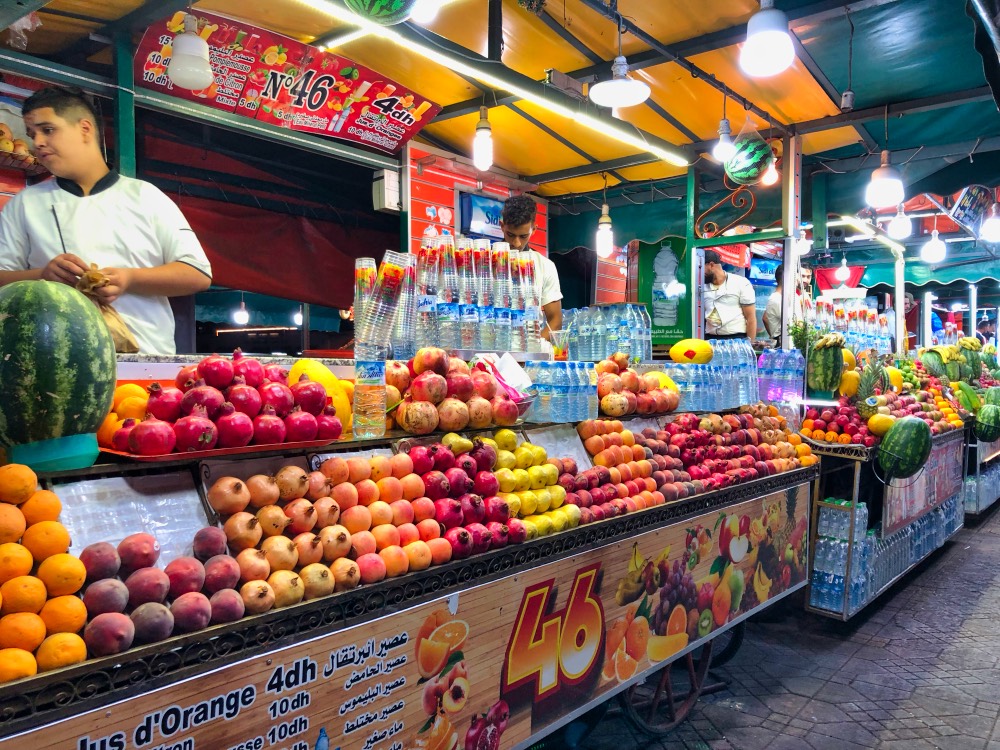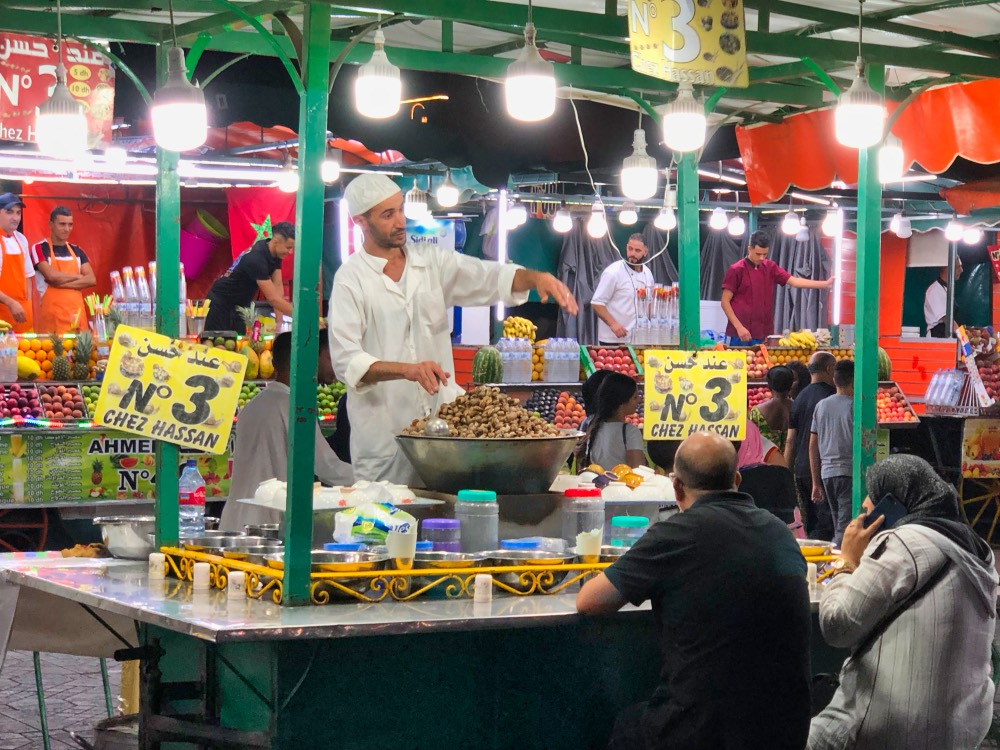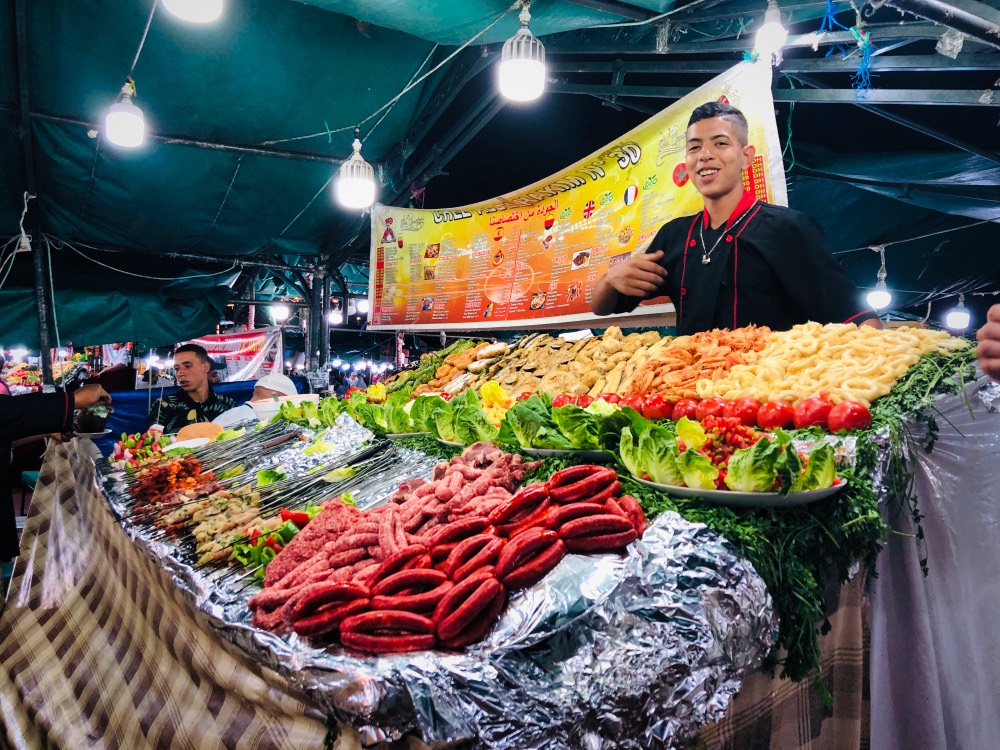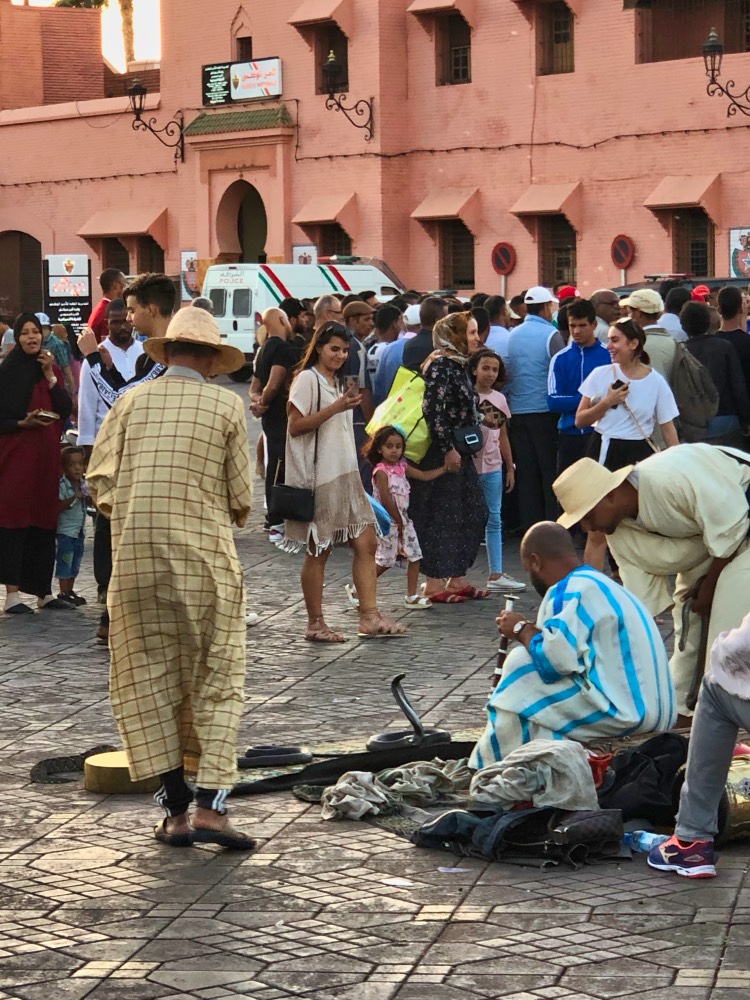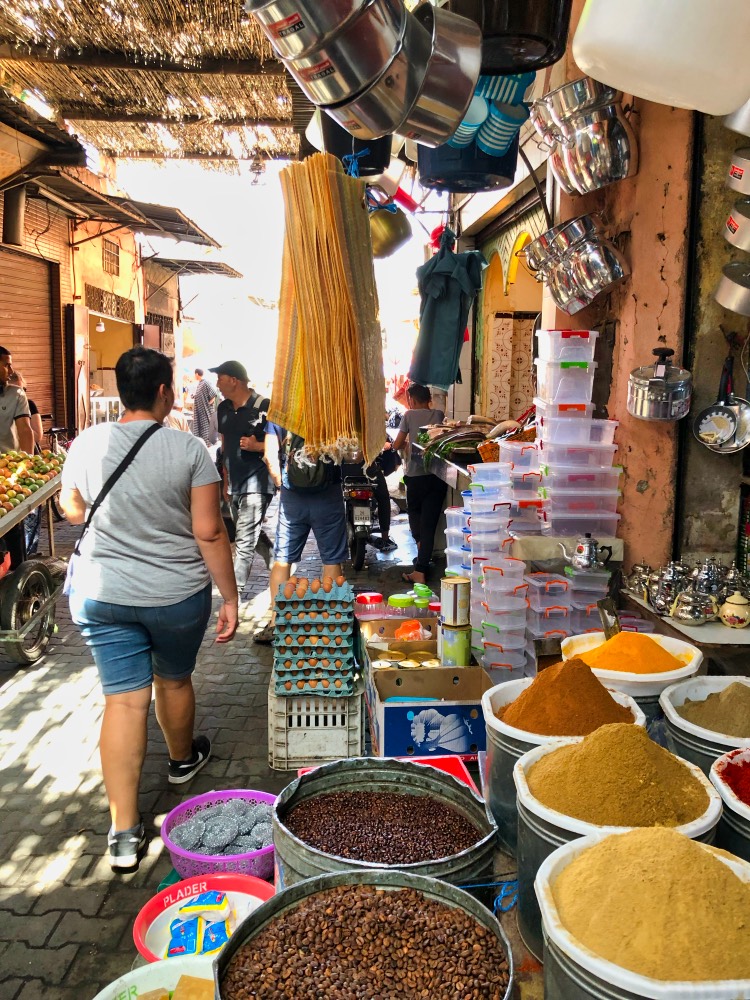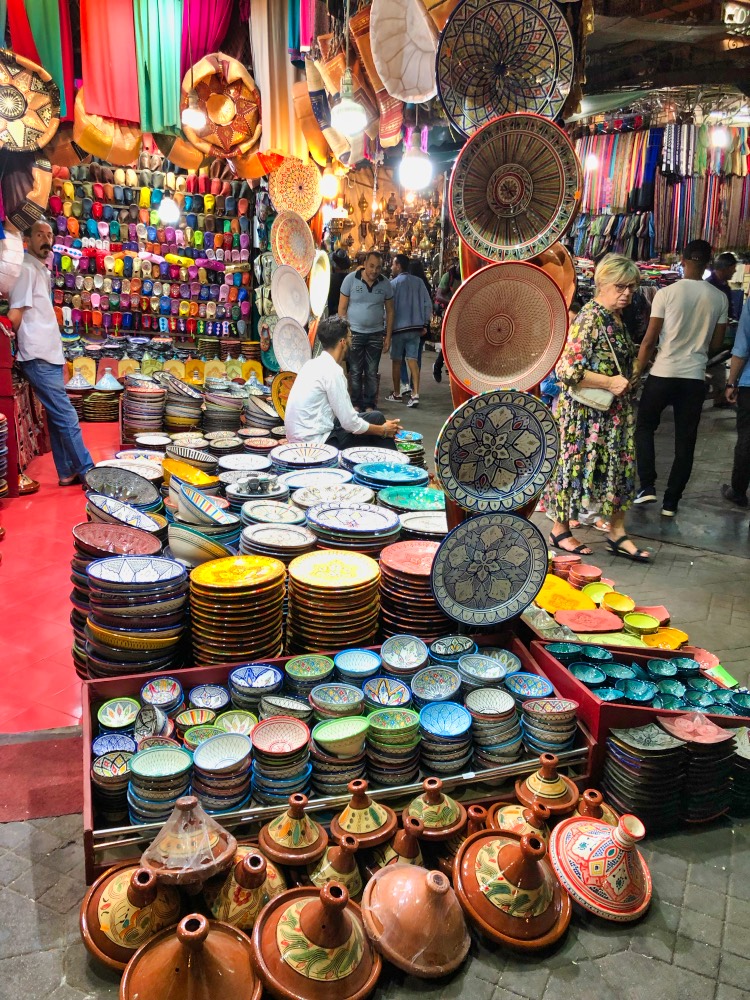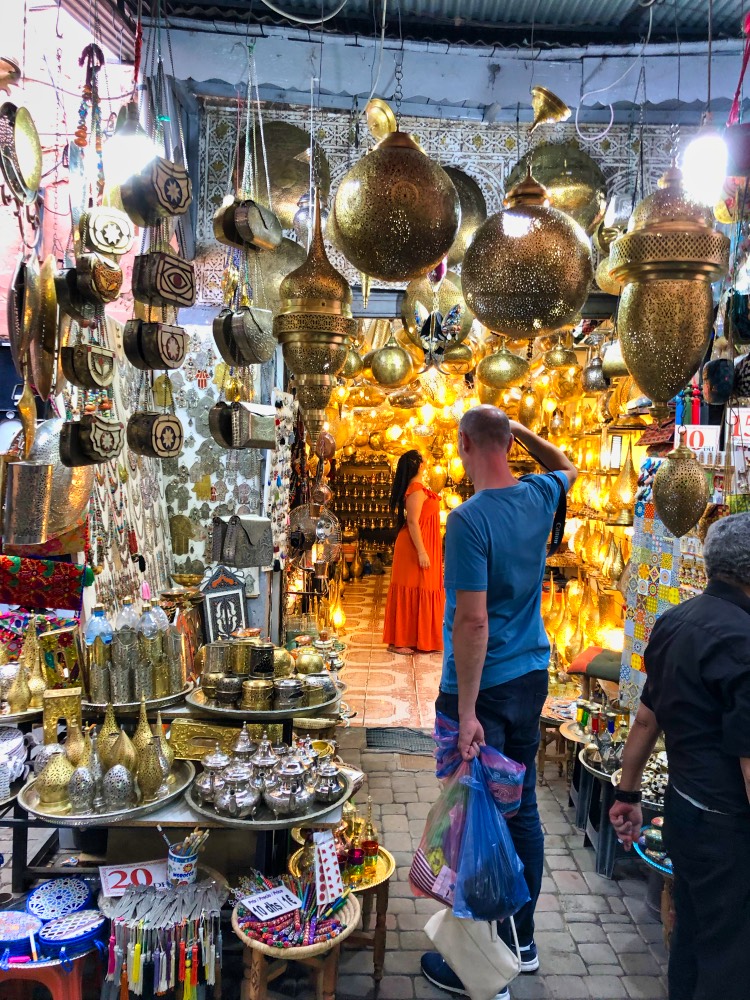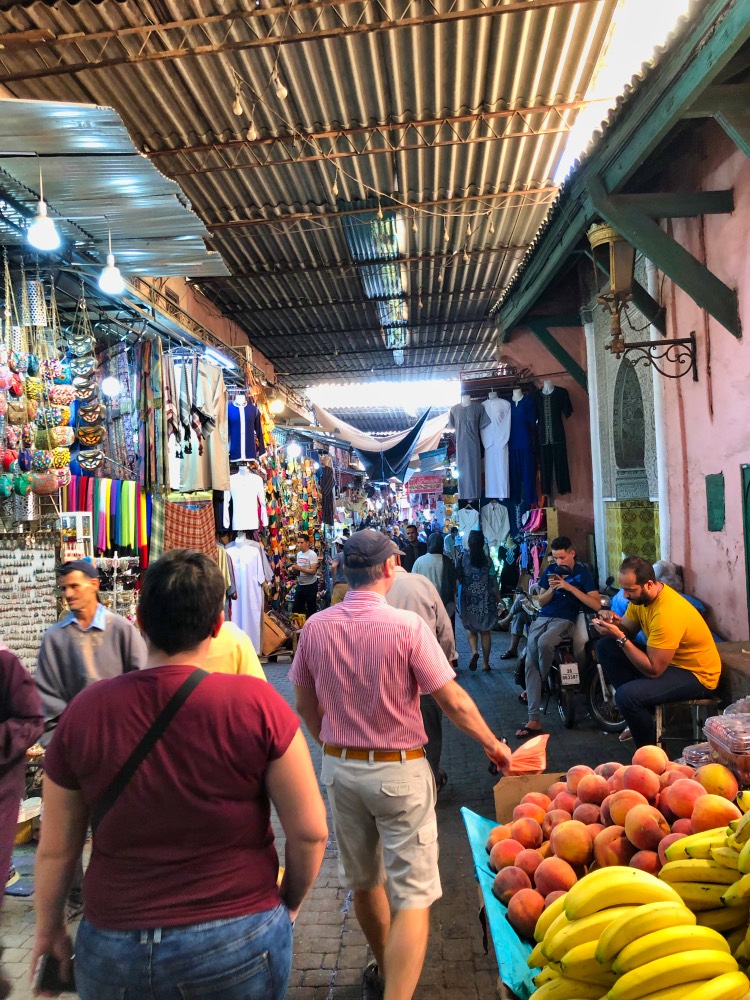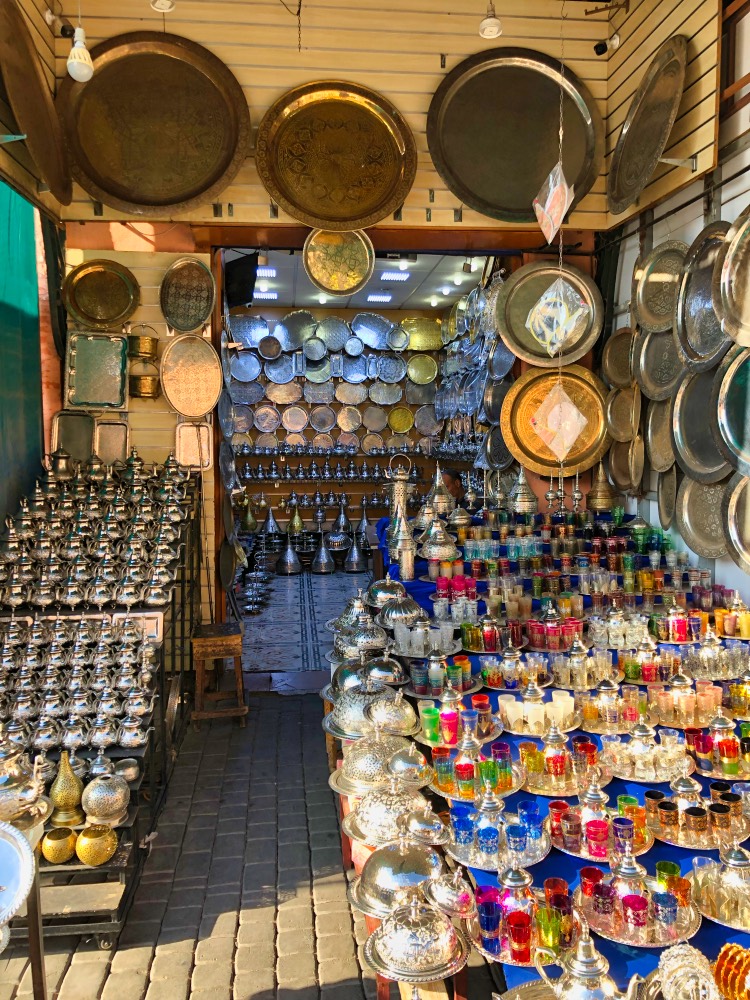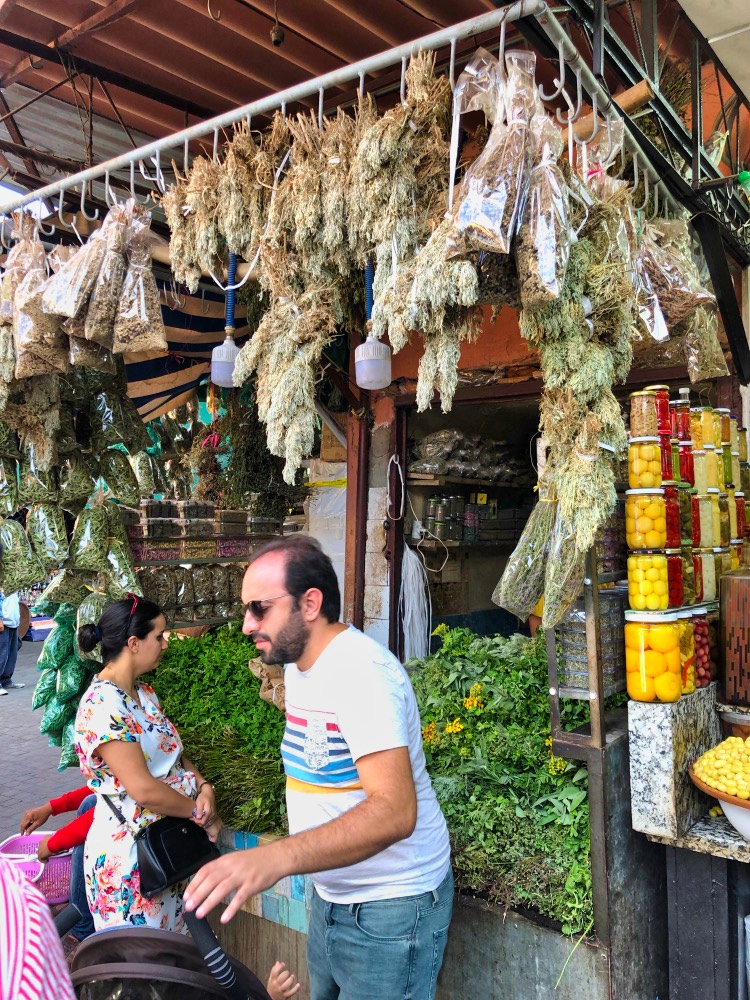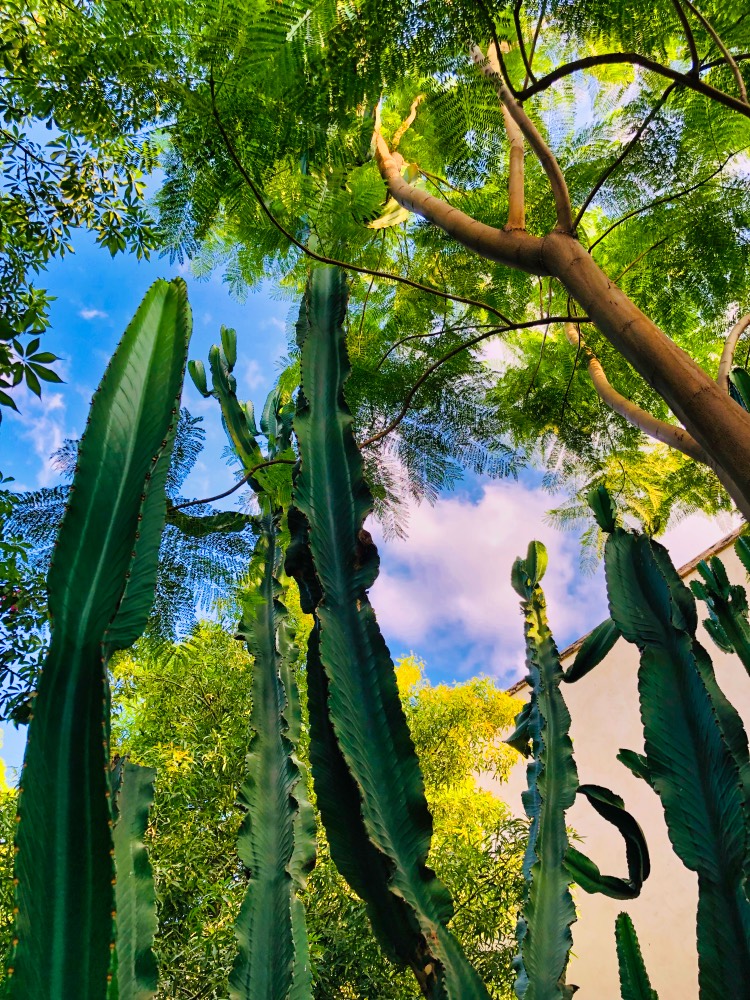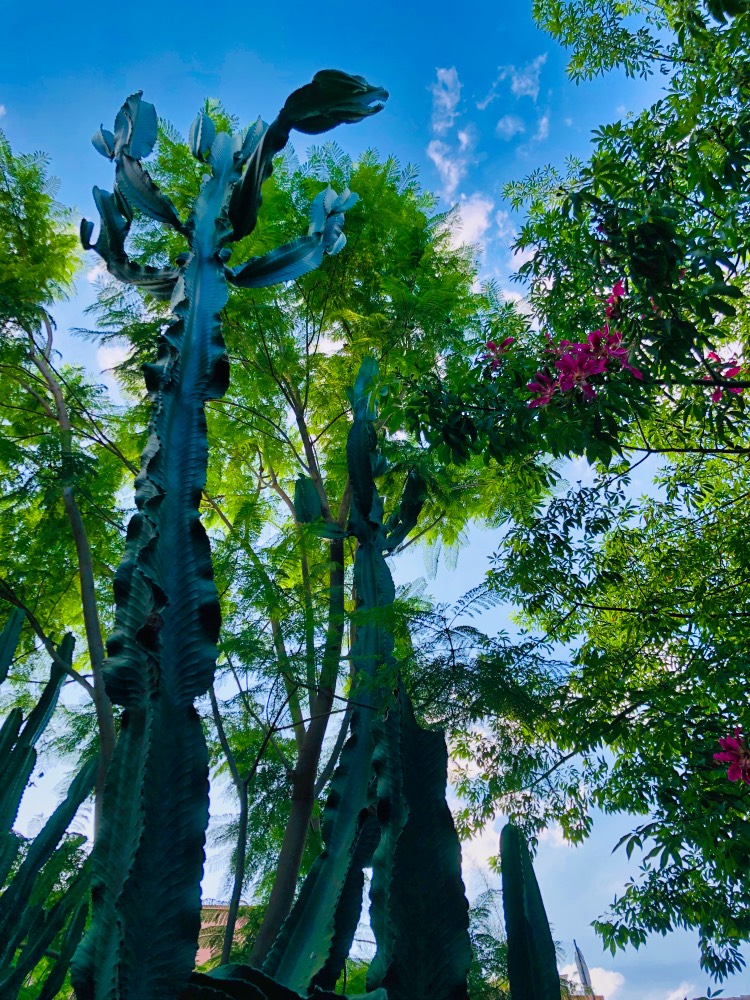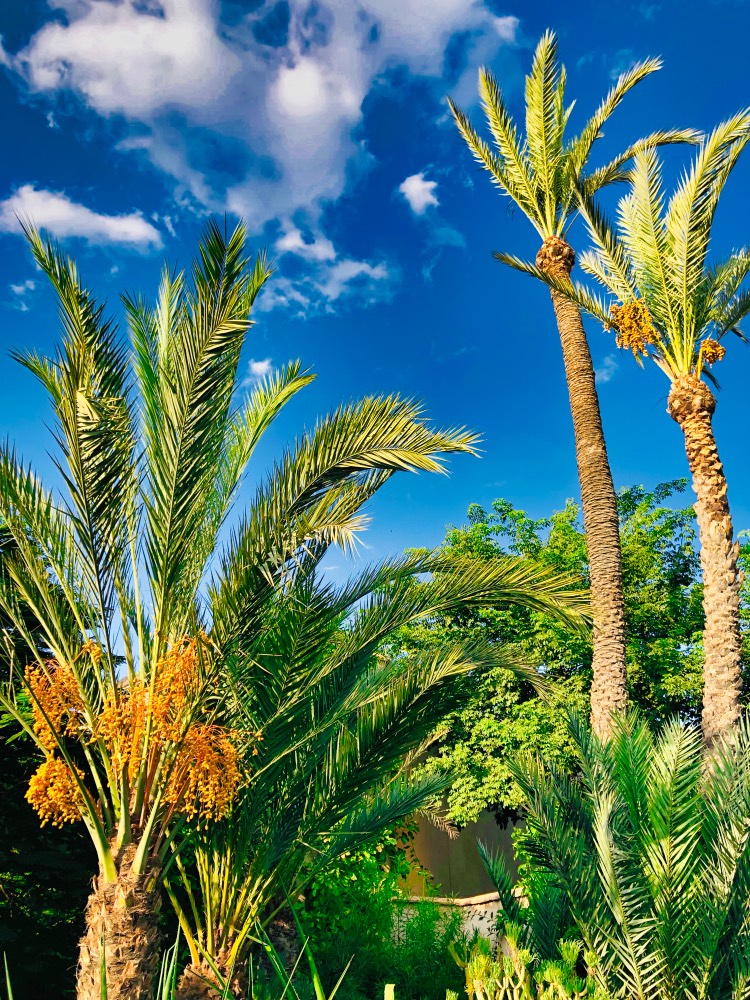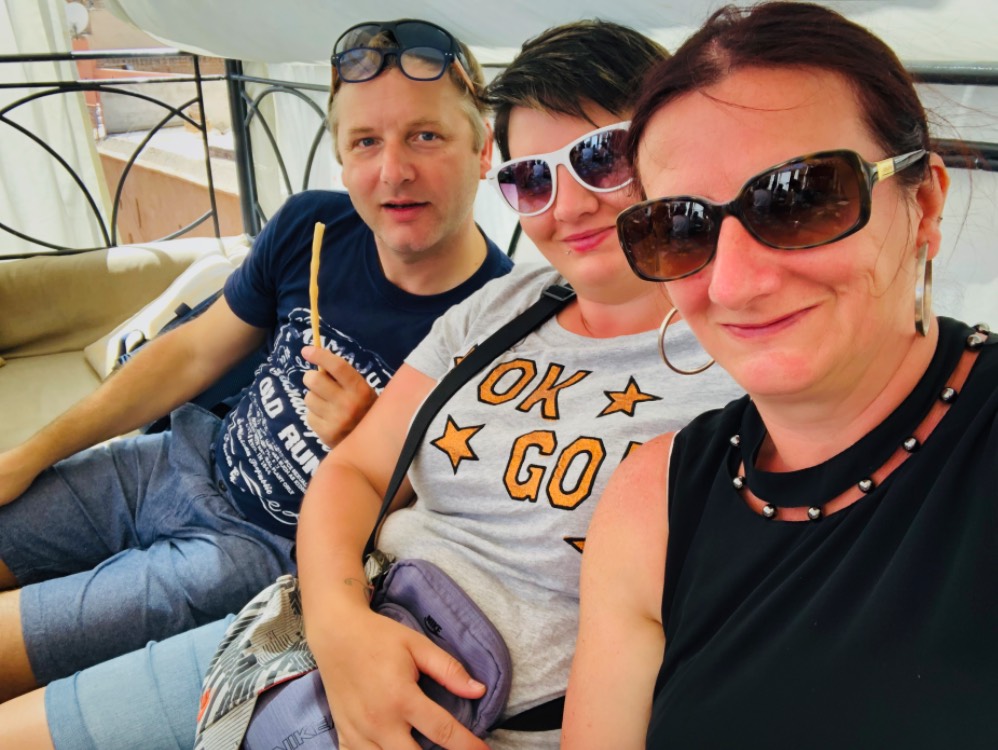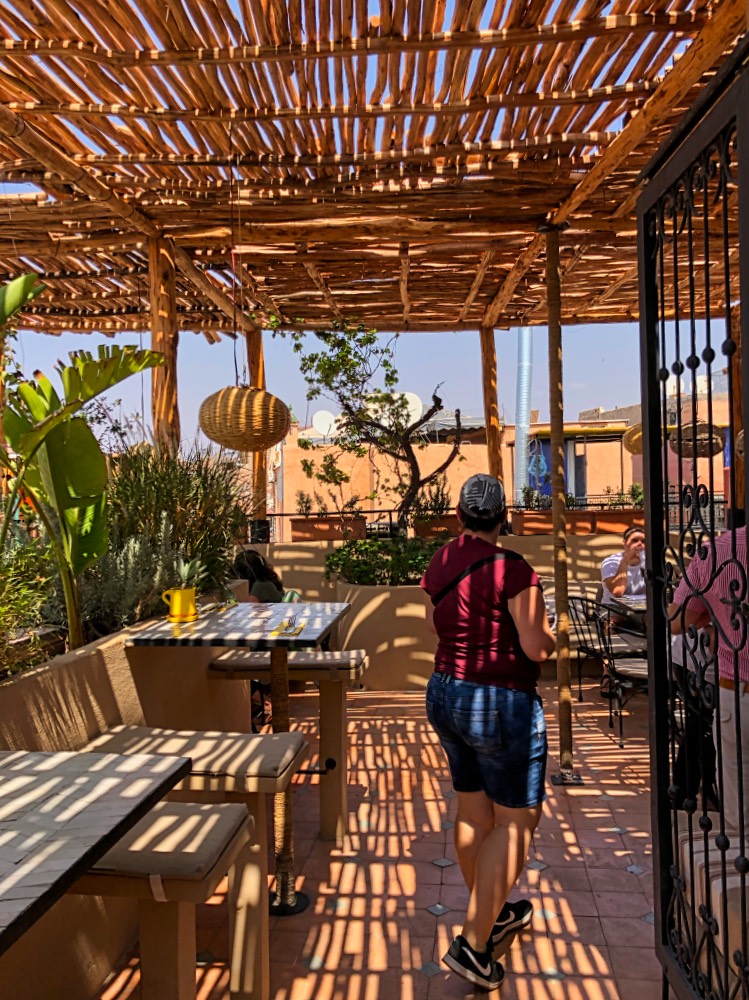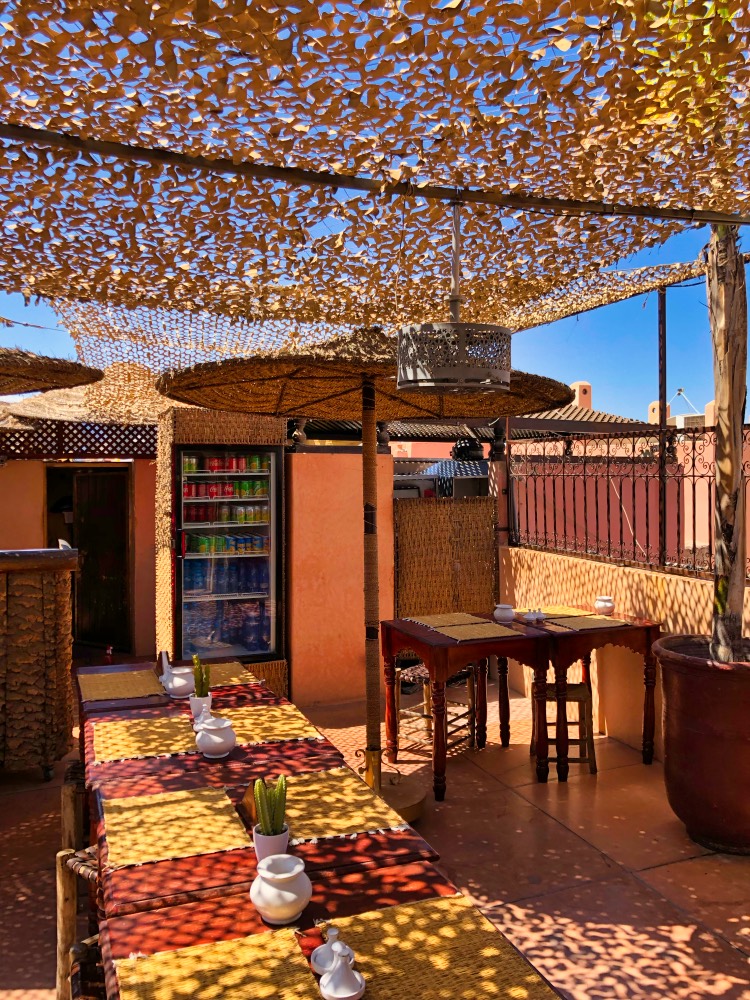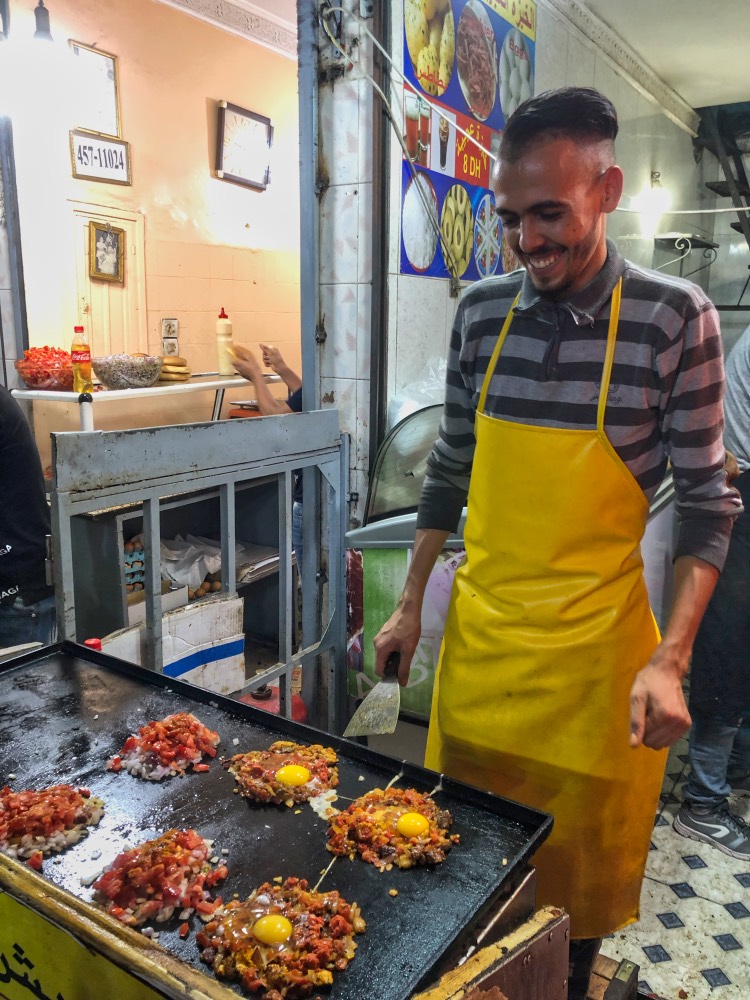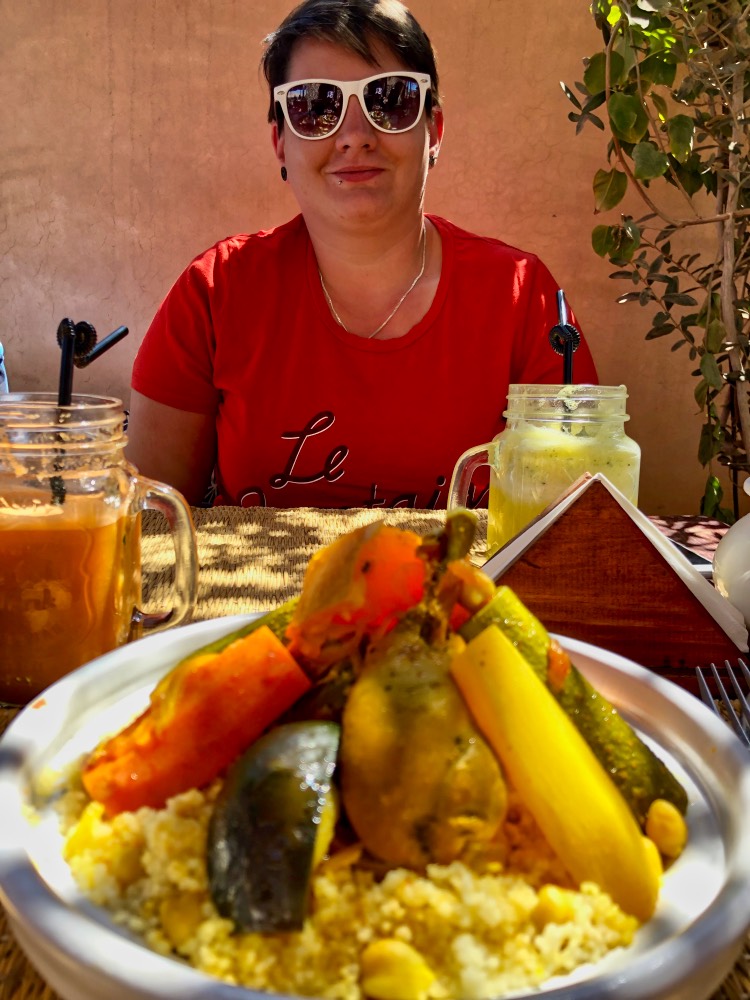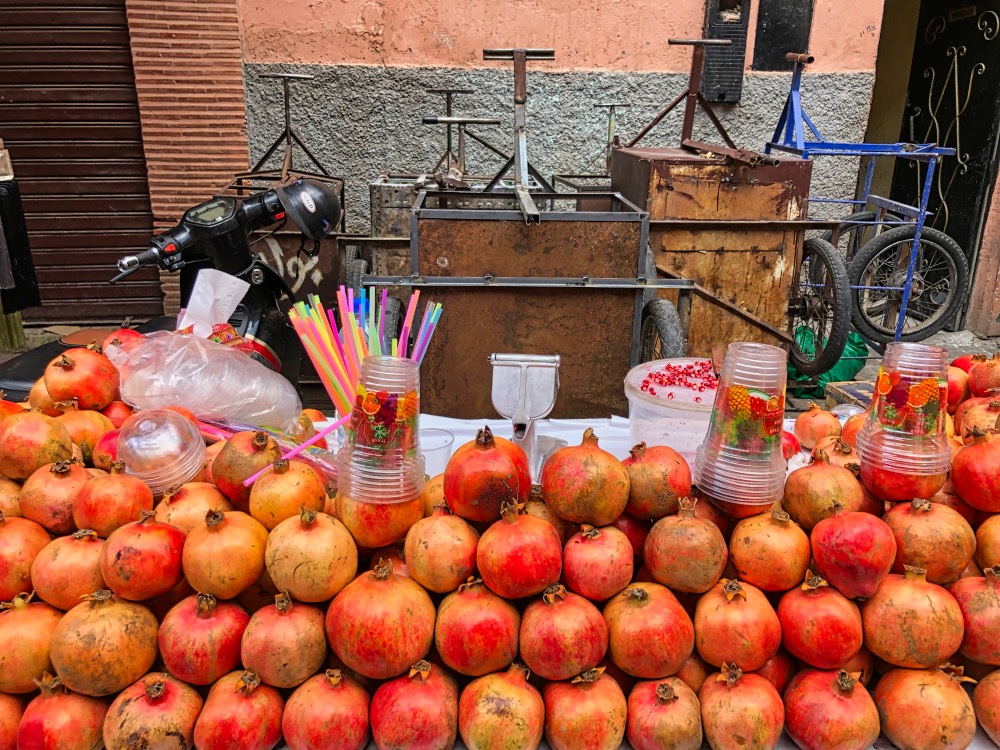When my older sister turned 30, I promised her that we would go on vacation together somewhere. She could choose the destination herself. She narrowed down her list to three countries, New York, Dubai, and Morocco. Since I have not been to Morocco yet, but I have been to the other two places, that’s how we ended up in North Afrika in the red city (the houses built in typical terracotta colors that characterize the city), Marrakech.
If you are staying in the Medina as we did, then a surprise will be waiting for you at the Jamaa El Fna. Because no cars can enter the Medina, from the edge of the big square some local pickups will take your languages to your final destination. I have never seen similar to this…
Locals with wheelbarrow trolleys are waiting for the minibusses and cabs to drop the tourists.
The Hotel
We stayed in Medina, in a neat, cozy and beautiful riad, called Riad Lamzia.
We were just a few steps away from the famous square Jamaa El Fna, and still, it was very quiet. This riad is a very good value for your money. The hosts are very friendly, always smiling, ready to help, willing to answer every question. The rooms were clean, decorated in Moroccan style, the beds were big and comfy. On the roof was a small pool where we could have a break every afternoon. The only thing I would complain about was the breakfast which was the same every single morning, bread with jam, and pancakes.
Bahia Palace
Bahia Palace is considered one of the great palaces of Al Hamra. Created by Minister Ahmed bin Musa, in the 19th century, to commemorate the name of his wife, Bahia. If you are expecting something similar to the royal palaces in Wien or Paris then you will be disappointed. It is a Moroccan artistic masterpiece in zellij mosaic floors, carved stucco plasterwork, and painted cedar ceilings, and therefore a must-see example of Moroccan architecture and design!
Saadian Tombs
If we speak about beautiful marble decoration then we have to mention the Tombeaux Saadiens. The tombs had been forgotten and were rediscovered and restored in 1917. The tombs have become a major attraction for visitors to Marrakech as the restoration took place with Italian marble. The mausoleum contains 4,476 members of 60 generations of the Saadi family.
El Badi Palace
El Badi Palace today consists of the remains of a palace built by King Ahmad I al-Mansur in 1578. The original building probably consisted of 360 rooms, a courtyard, and a pond. The building was richly decorated with Italian marble and gold from Sudan. Although its condition is quite the opposite of the Bahia Palace, it is still very interesting to visit the ruins. You could also call it a stork castle, because of the many storks nesting on the walls. When visiting don’t miss the rooftop terrace which offers beautiful views of the city and surroundings.
Koutoubia Mosque
One of my favorite scenes in Marrakech is the Koutoubia Mosque. Construction of the mosque started around 1150. The minaret of the Koutoubia served as an example for the Giralda Mosque in Seville, which in turn served as a model for thousands of church towers in Spain and Eastern Europe. Unfortunately, the mosque is not open for nonmuslims so we could only admire the exterior which is the most stunning at sunset.
Jemaa el Fna Square
There is no more lively place in Marrakech than Djemaa el Fna, the bustling square in the old center of the city. As night falls, the square fills with musicians, street vendors, acrobats, drummers, fortune tellers, storytellers, belly dancers, and henna tattoo artists. In the evening there are various food and drink stands around the square. We were suggested in our riad to go to stand number 30, so we did and we were not disappointed with the food there. Because our accommodation was so close to the main square we did come back several evenings for a cheap and delish dish.
Souks
Visiting the souks was a must for us. Staying that close to it we could not really avoid going there. This magical place is the heartbeat of the old city, the medina. The souks are a maze of narrow streets and narrow alleys where you can buy everything from herbs and olives to ceramics and carpets at hundreds of shops. It is an intoxicating mix of colors, smells, and sounds, a labyrinth filled with shouting vendors and bargain hunters where you can get lost and wander for hours.
Contrary to negative opinions it was a positive disappointment for us that the locals were very kind. Of course, there are more violent vendors, but they have to be ignored. Several people helped us on the streets without payment, and we did not have any bad experience.
Le Jardin Secret
In all the hustle and bustle of the souks, it was a relief to find a garden like Le Jardin Secret! Take your time to relax – enjoy the plants, the shade, the water features, and the ingenious irrigation system. On the roof terrace, you can sit and enjoy a drink or a snack. If you are up to some alcoholic drinks like we did, then you can visit Cafe Arabe on the other side of the road.
What to eat and where to eat it?
I found eating very easy and relaxed in Marrakech. There are a lot of good restaurants with roof terrasse offering a good view of the city and shades. The food was always very tasty and sufficient. If you are running out of your budget then streetfood could offer you cheaper ways of eating. You can have a safe and good meal on the Djemaa el Fna as I mentioned before. You can eat here classic food like grill dishes, couscous or tajine. Do you want to eat even more like locals? Then you have the choice from harira, sheep heads or snails.
